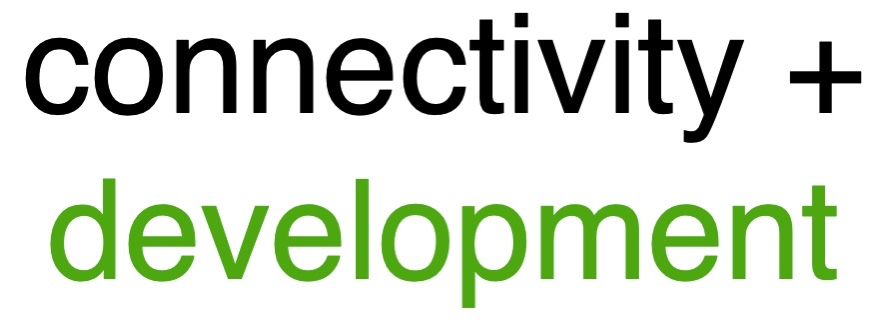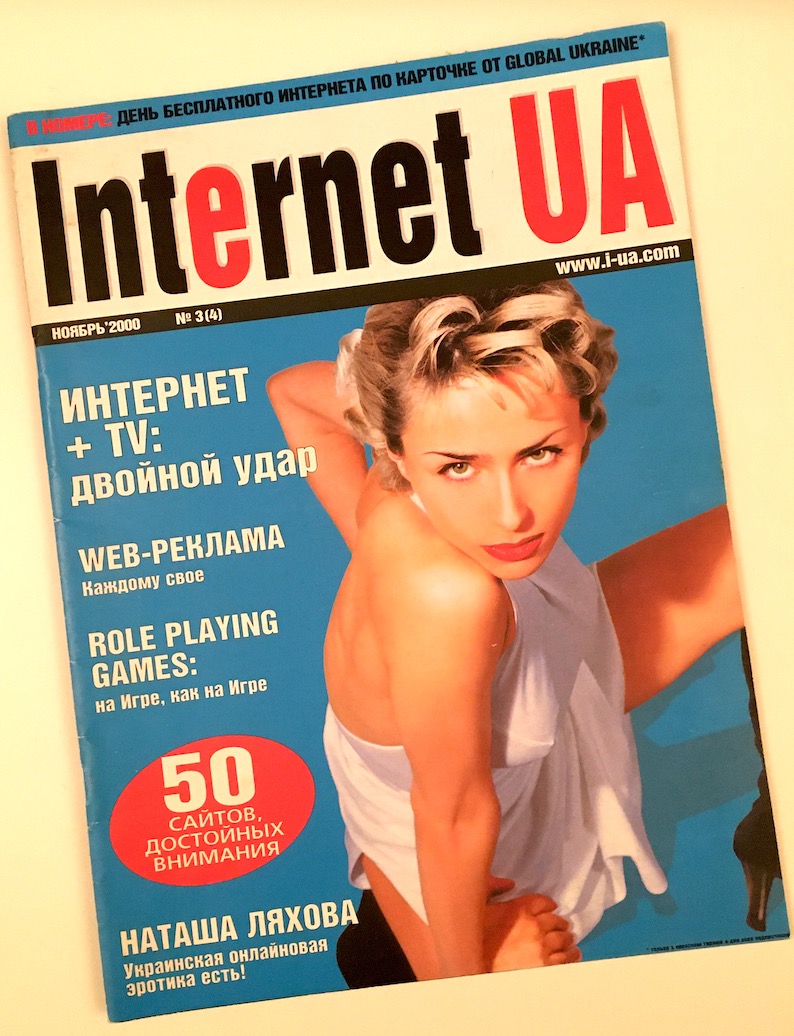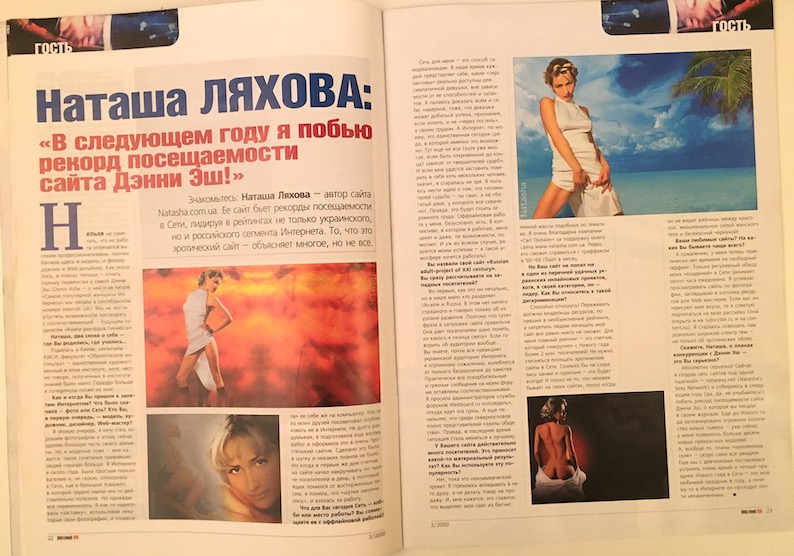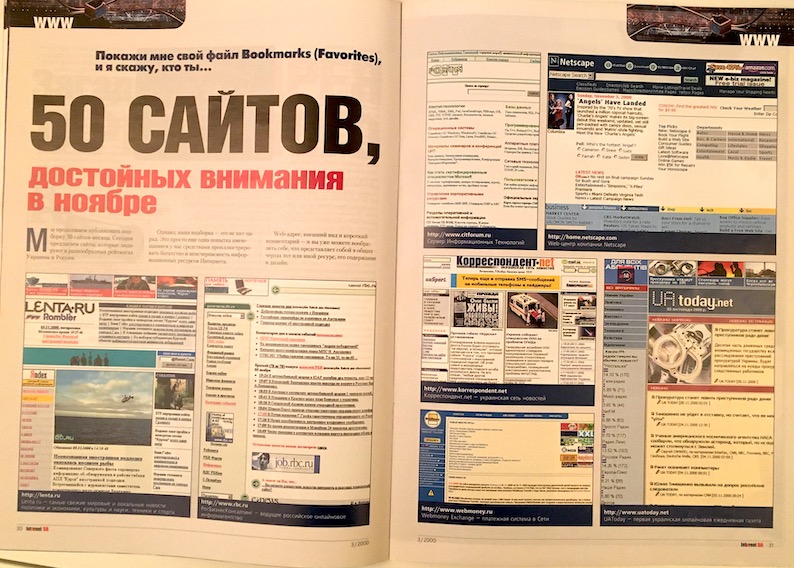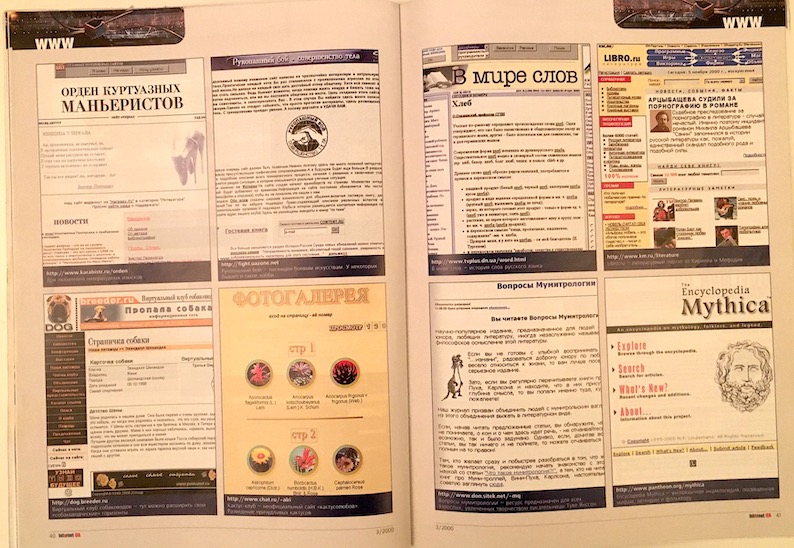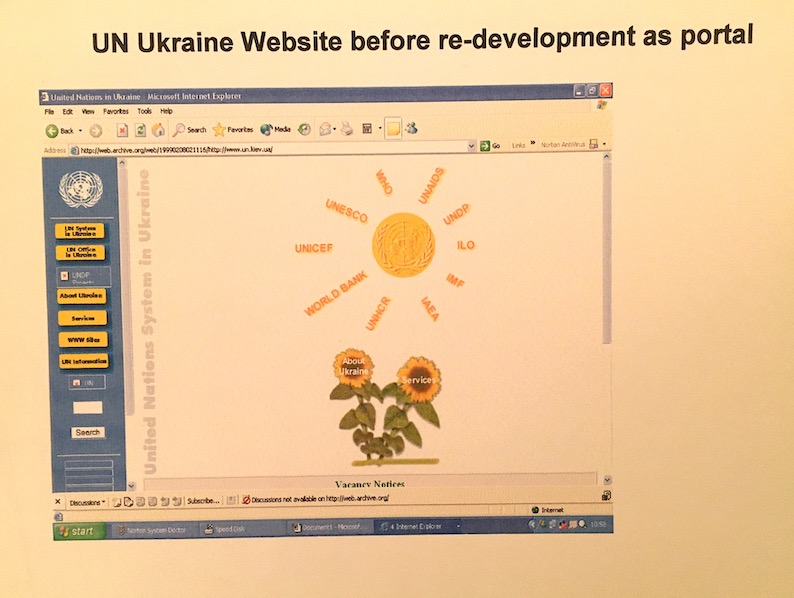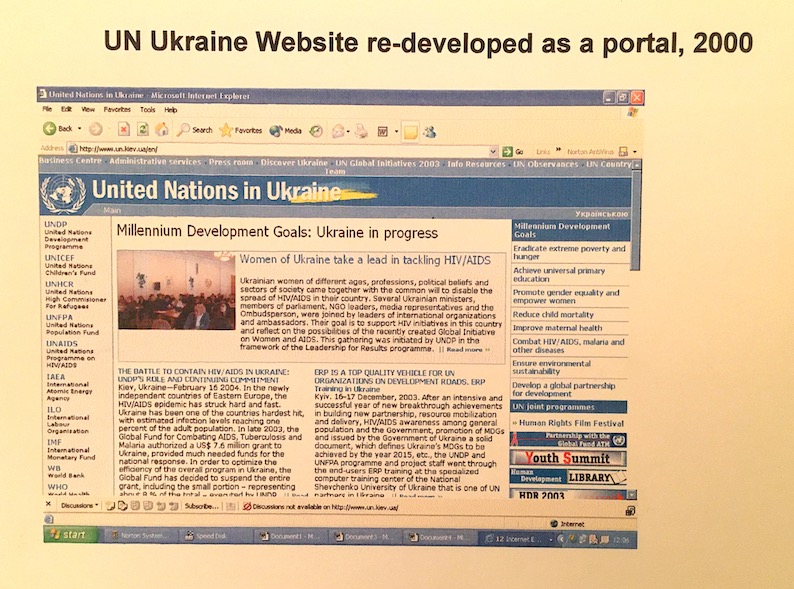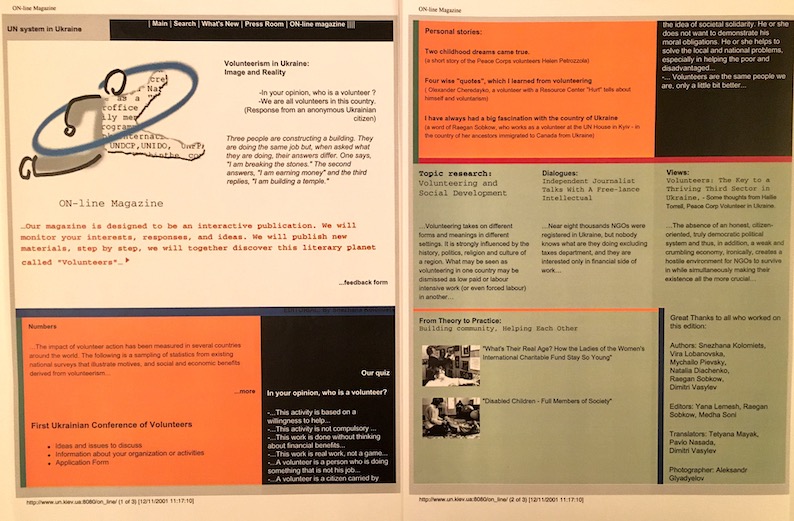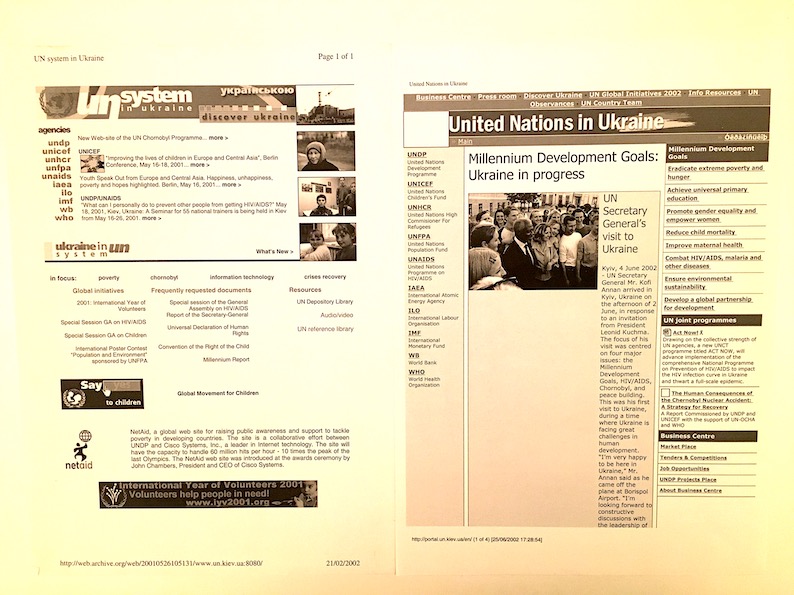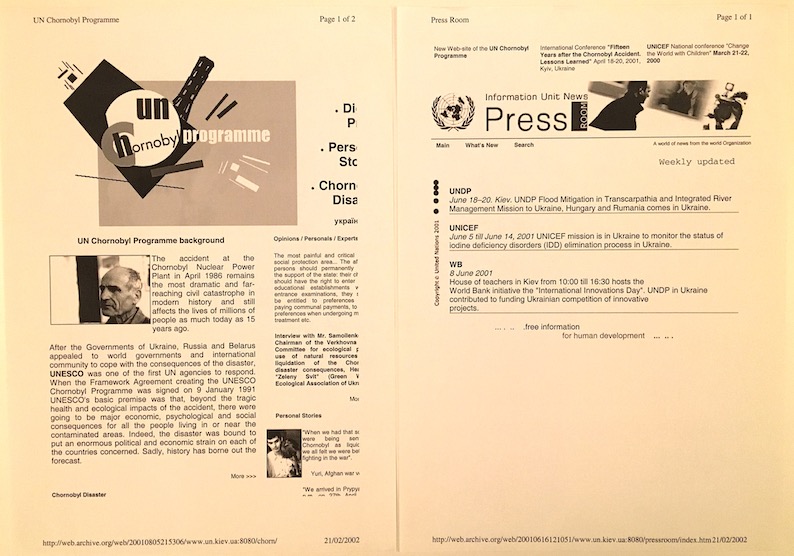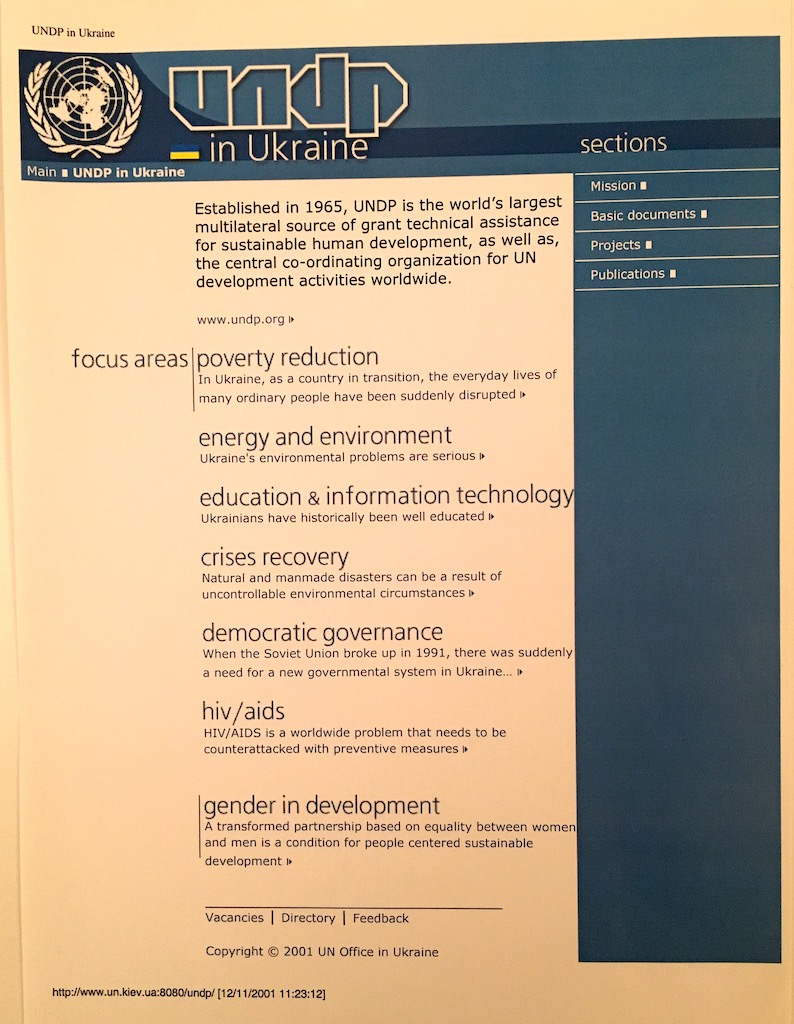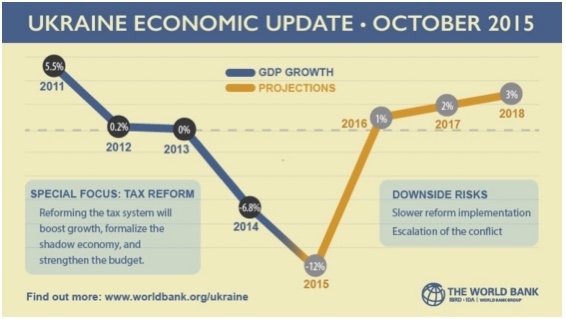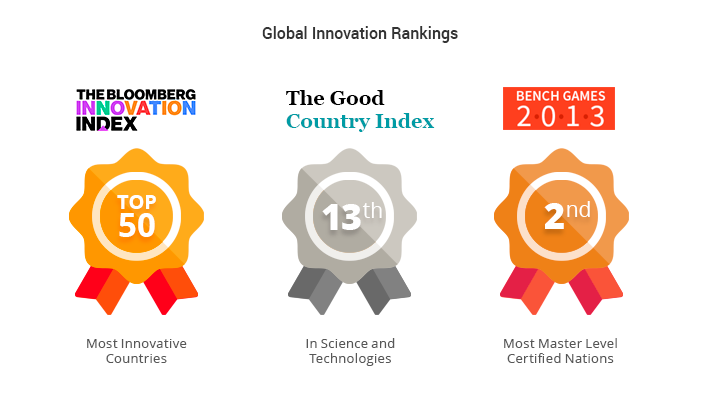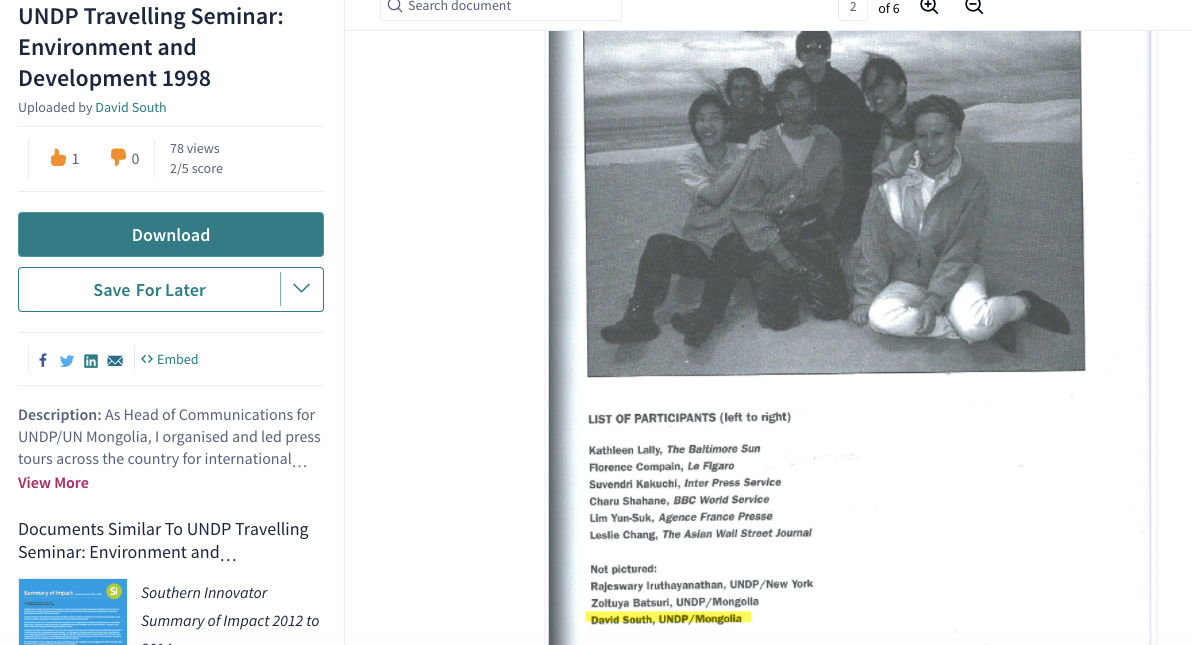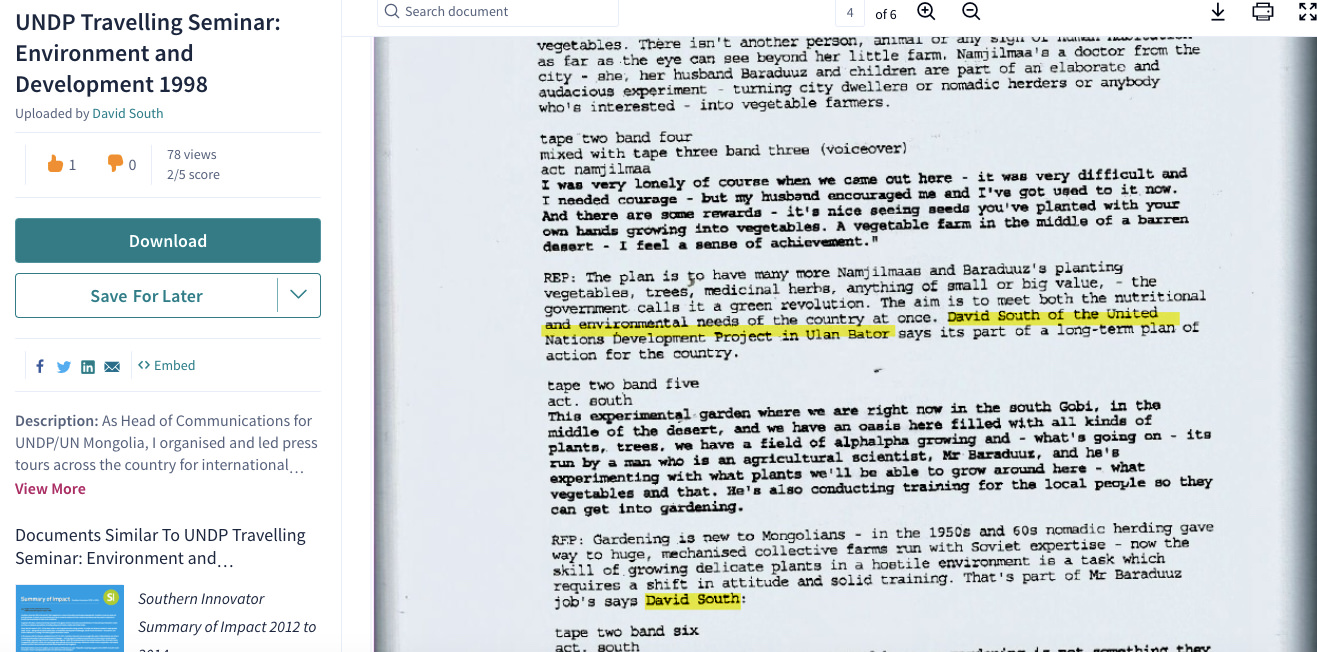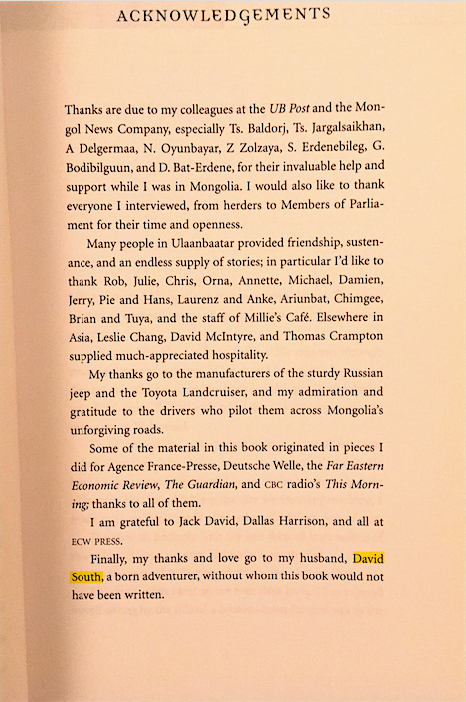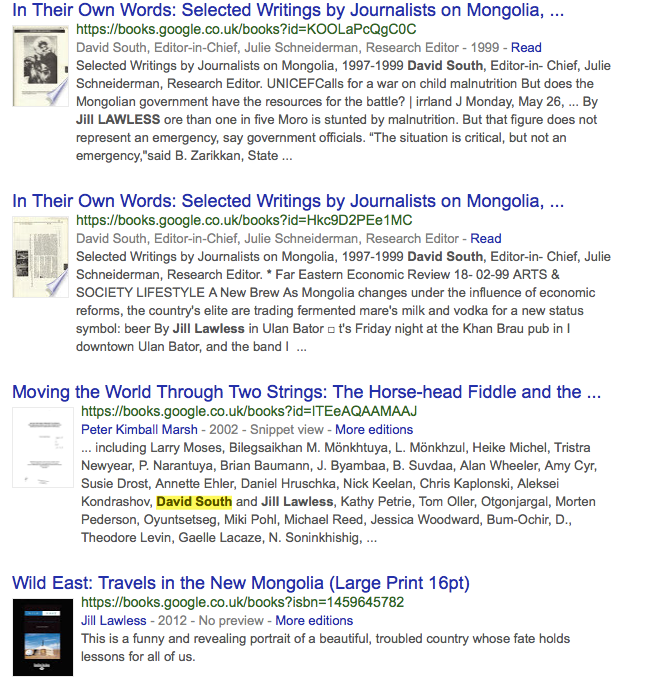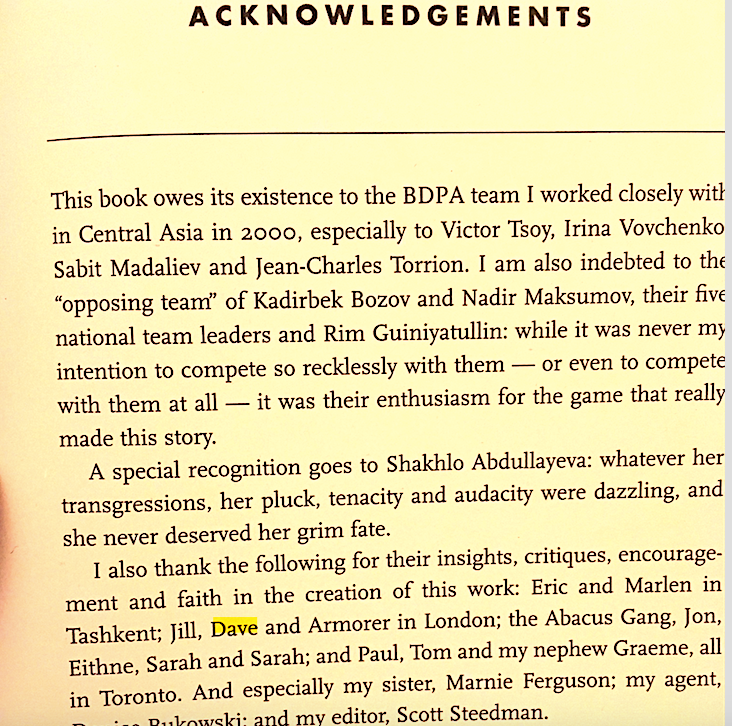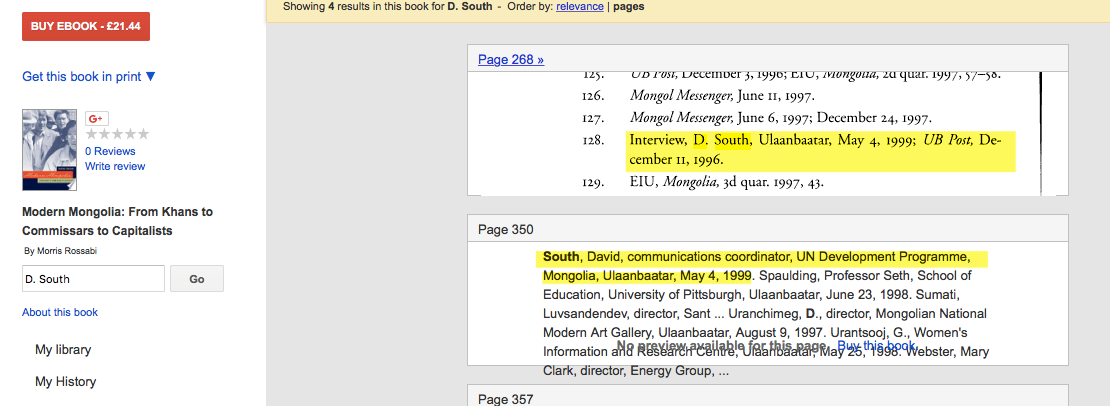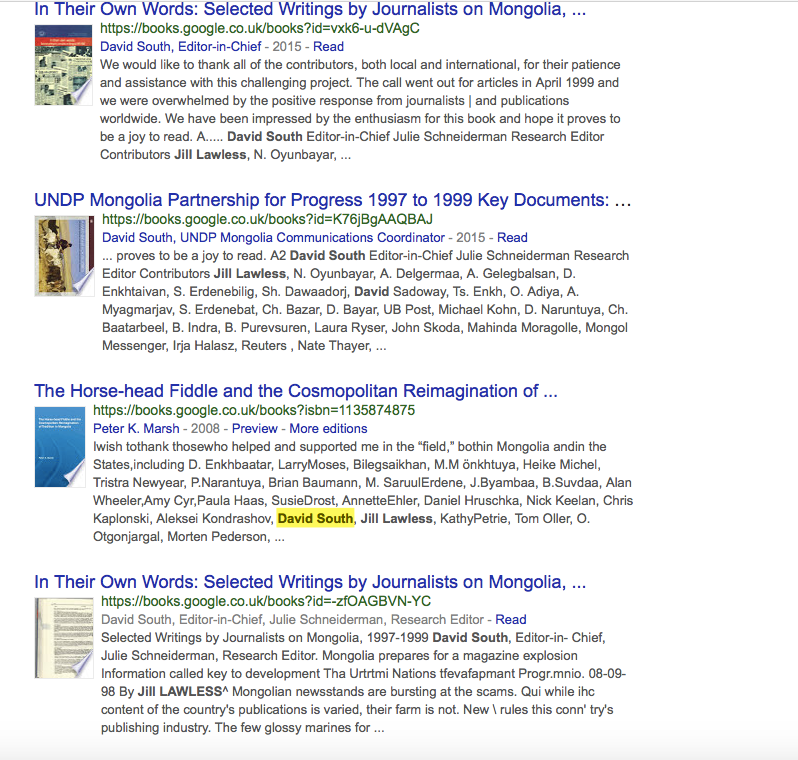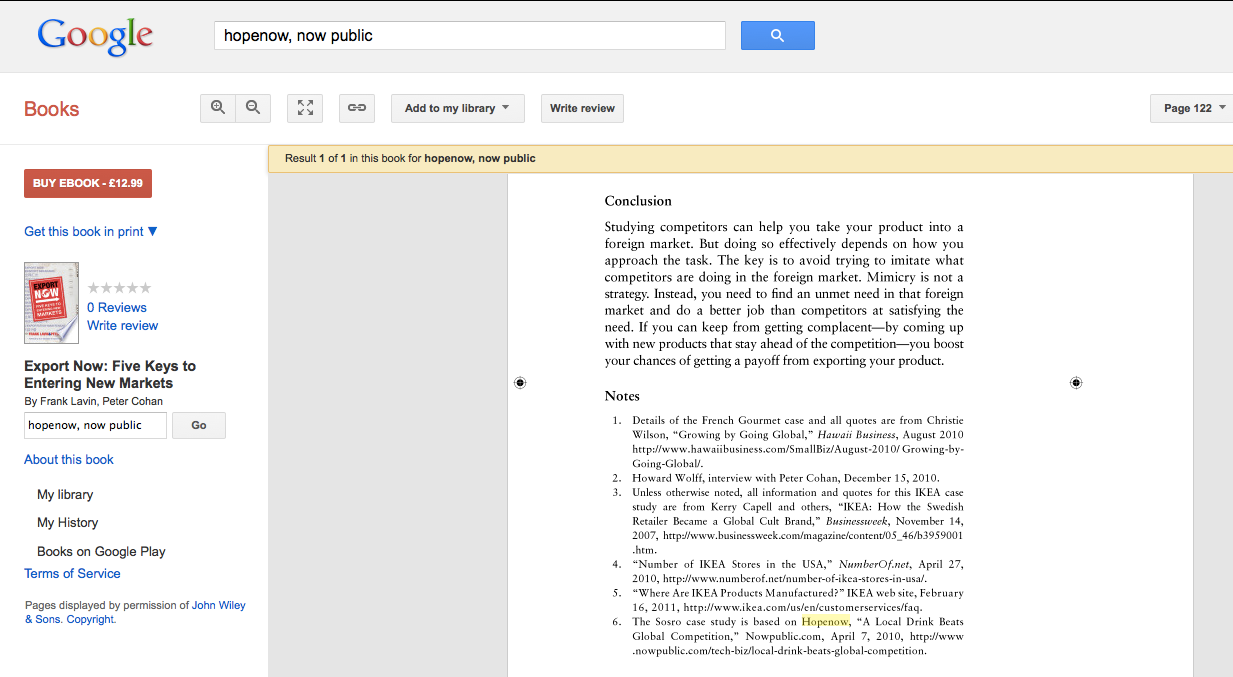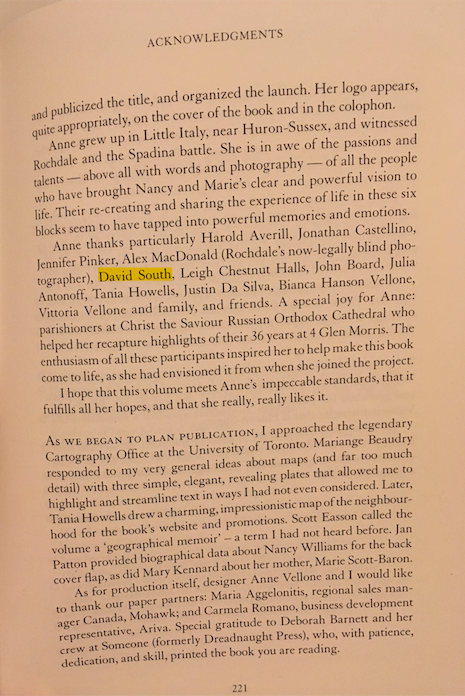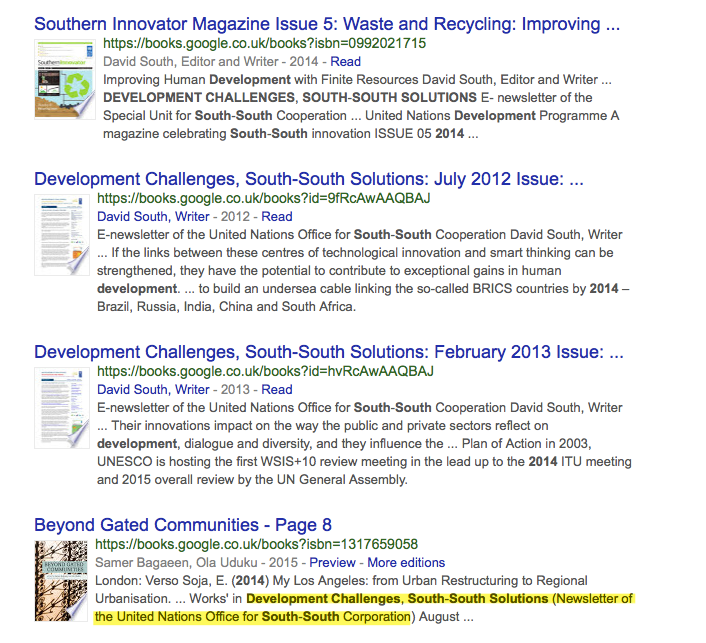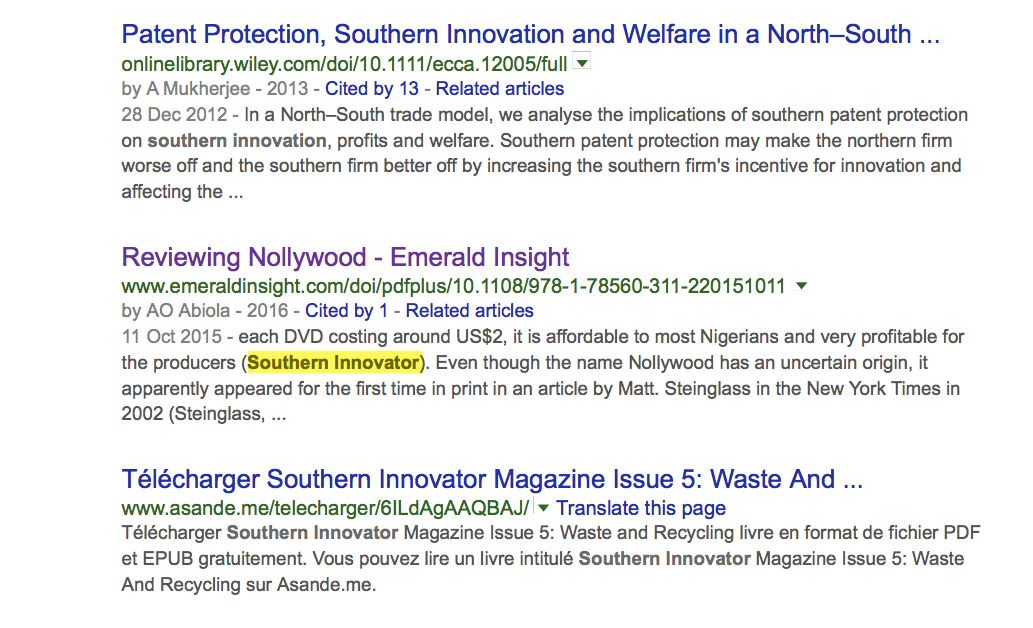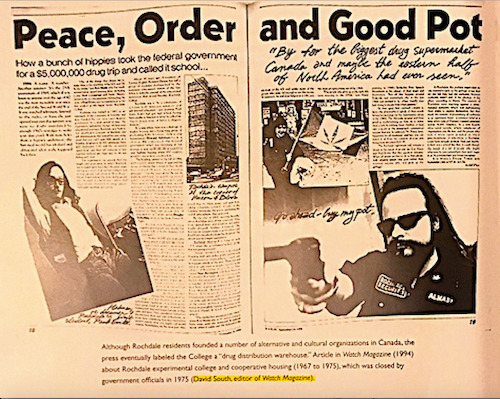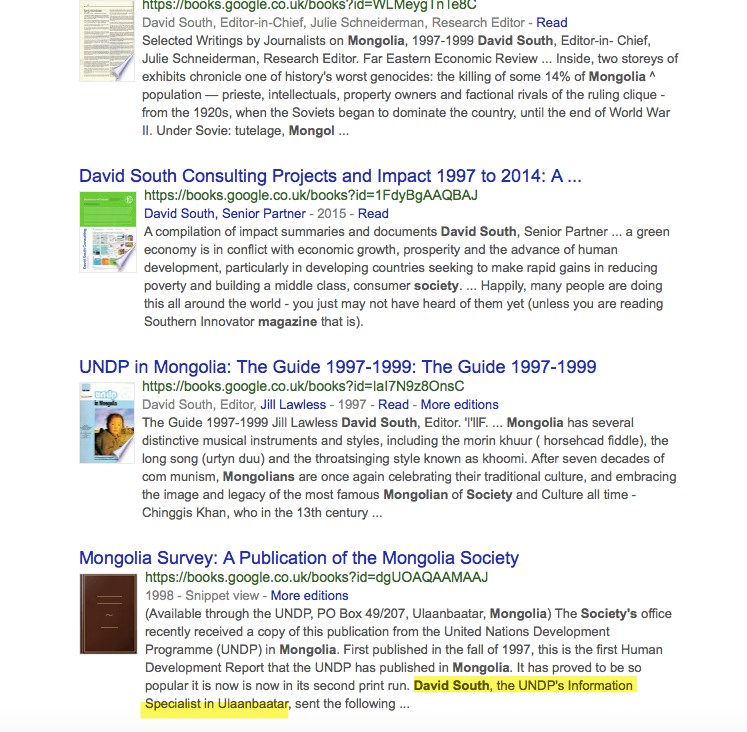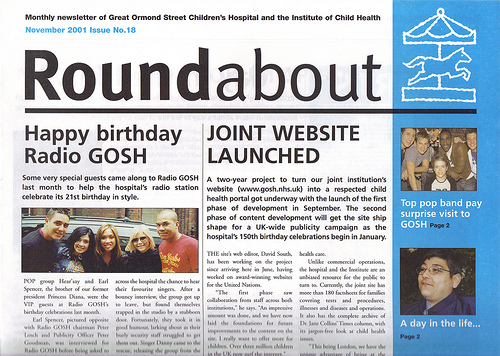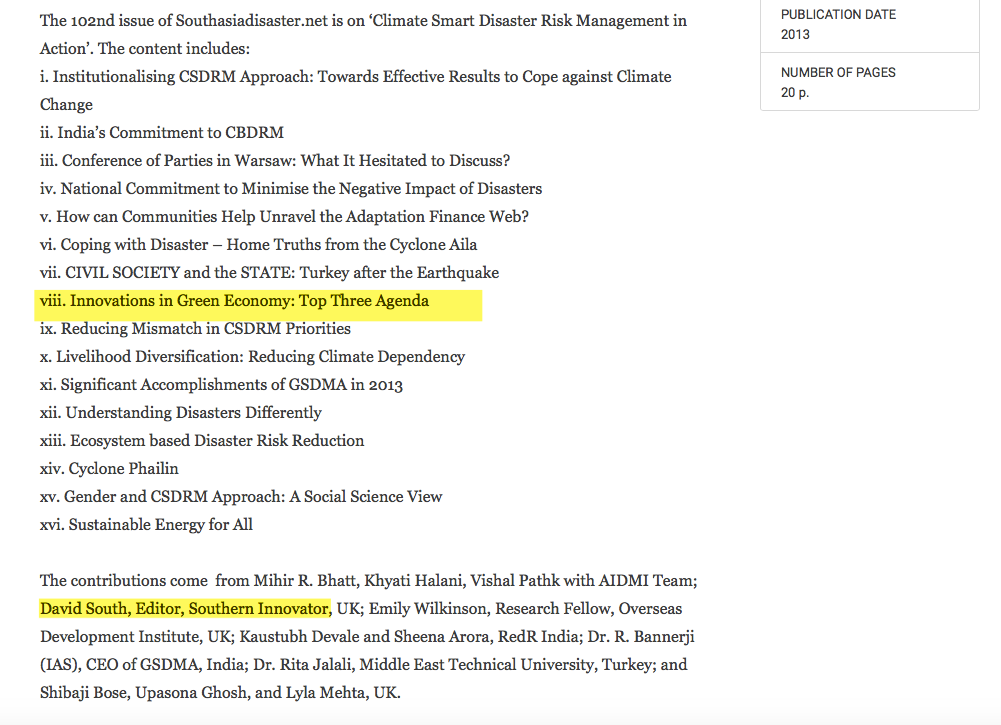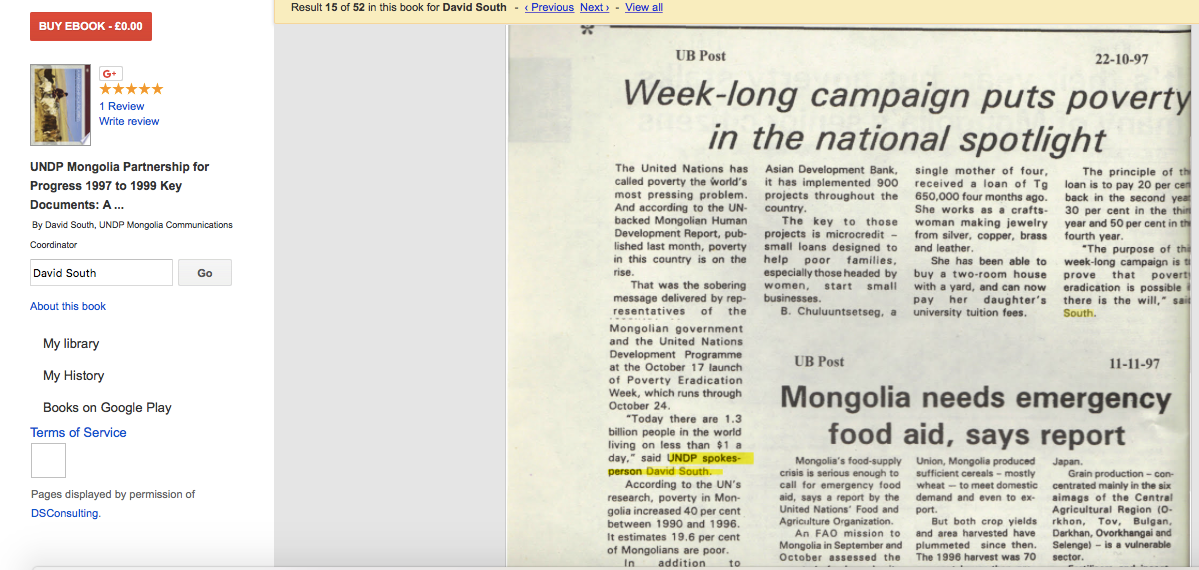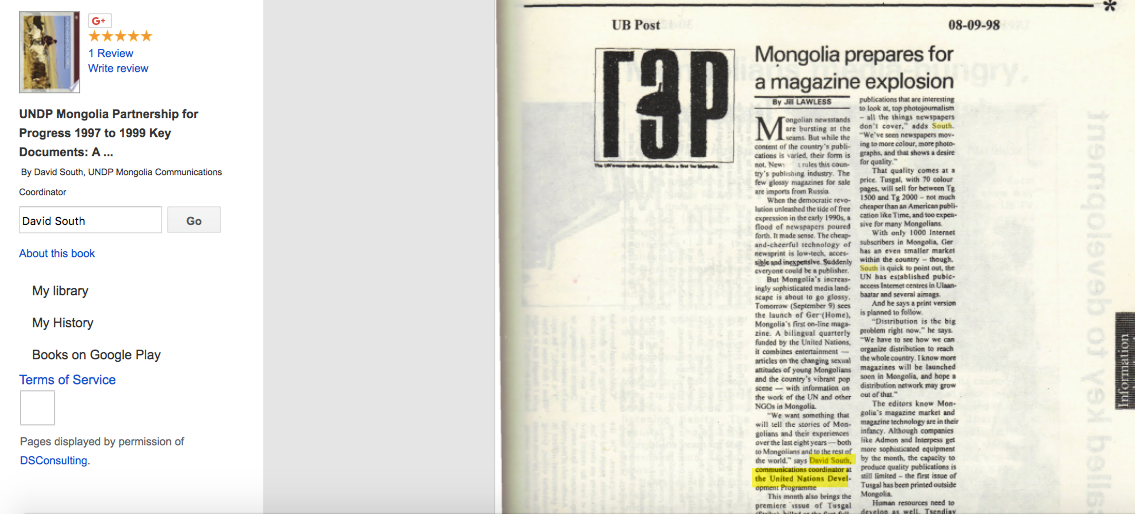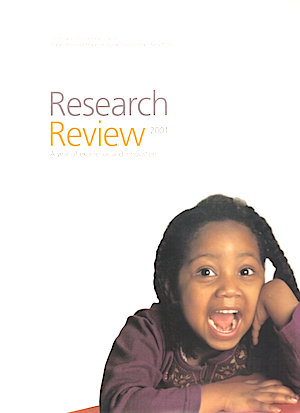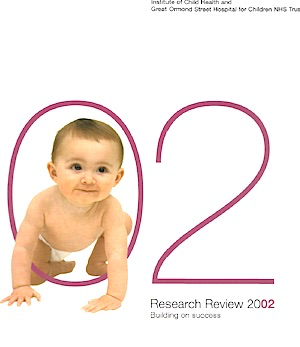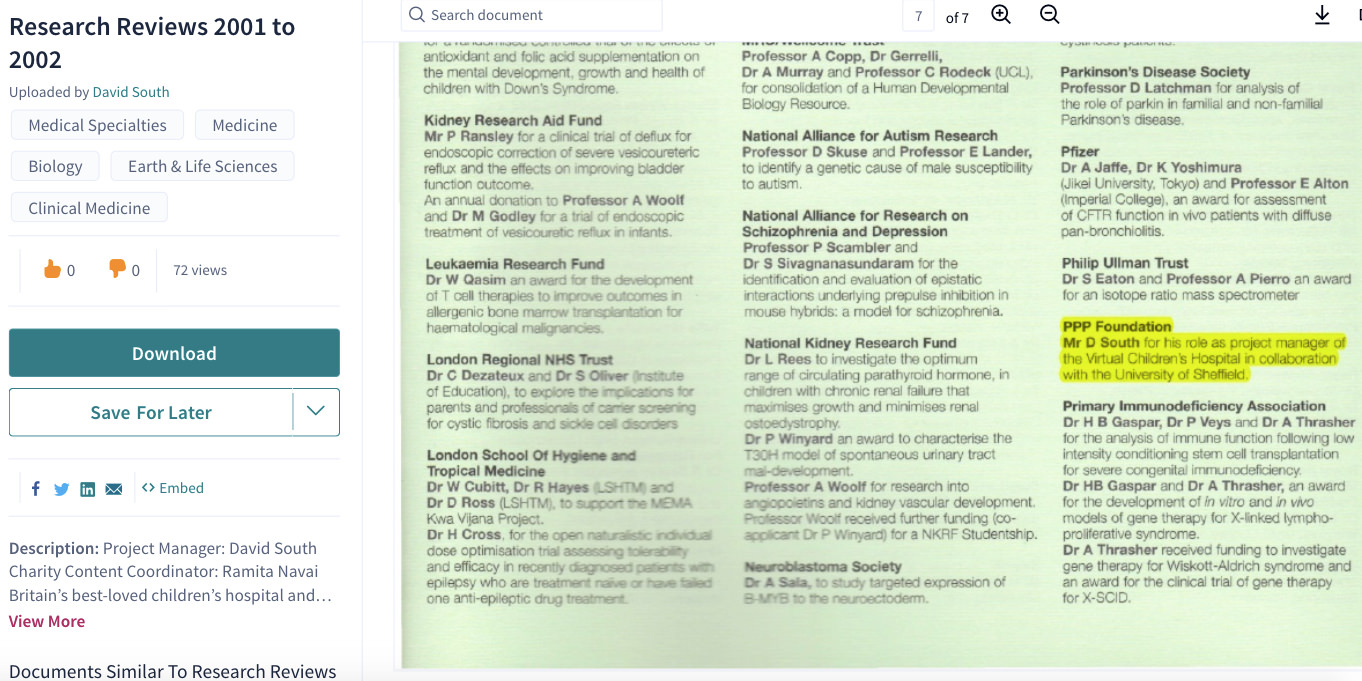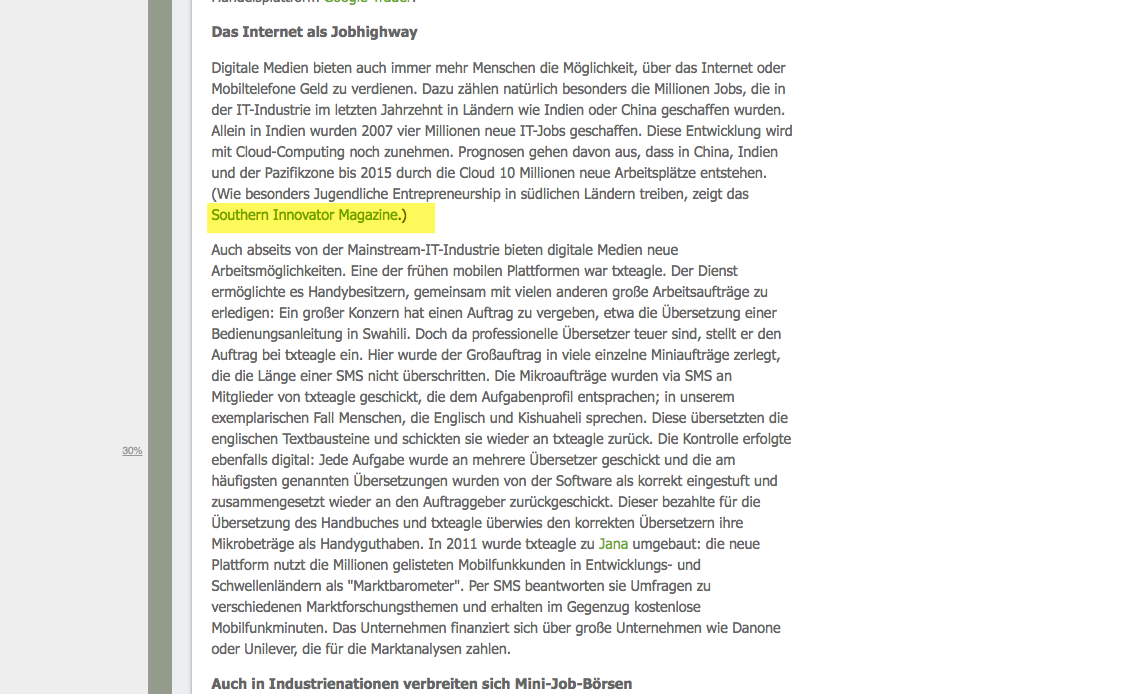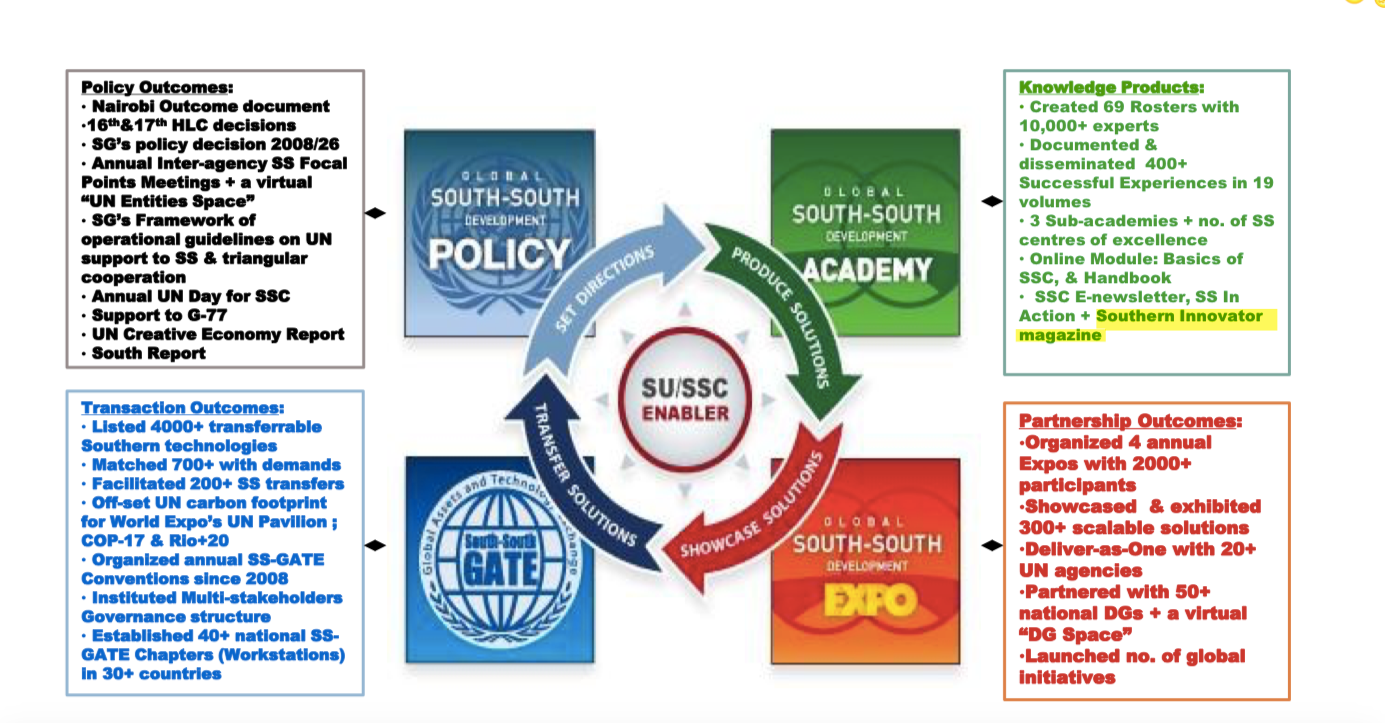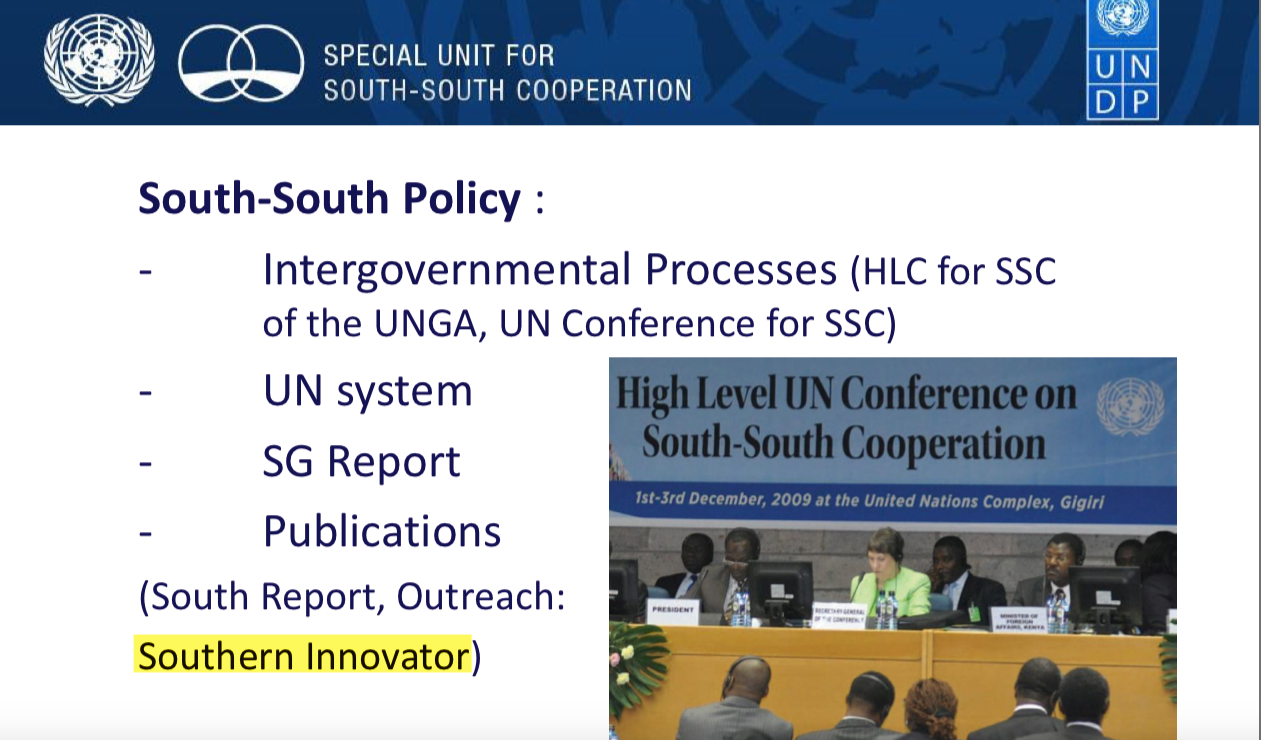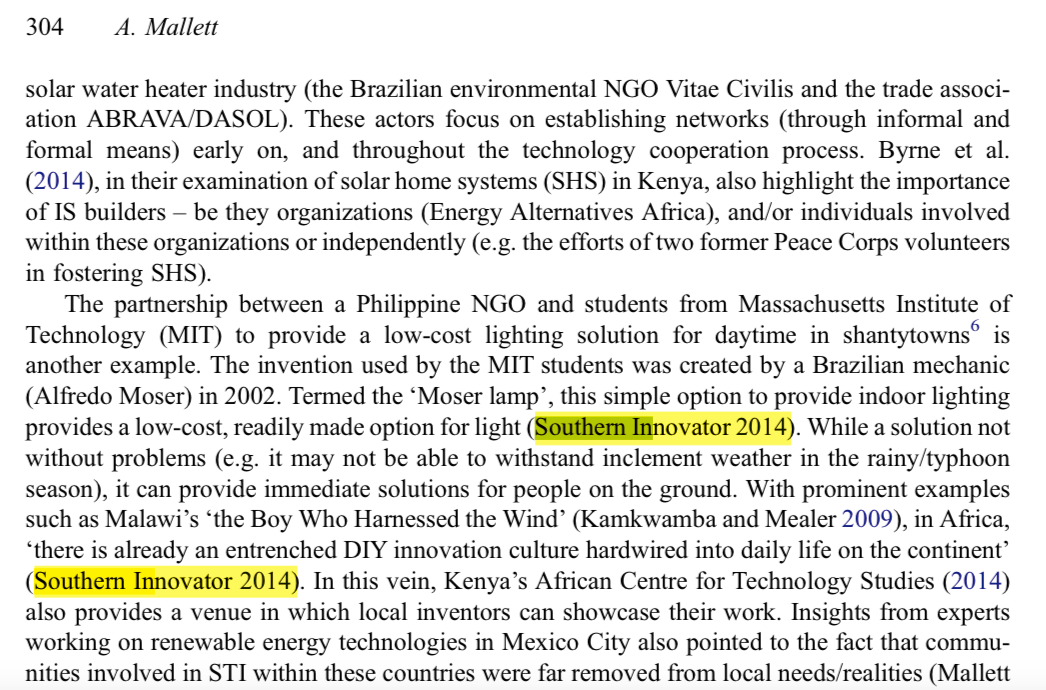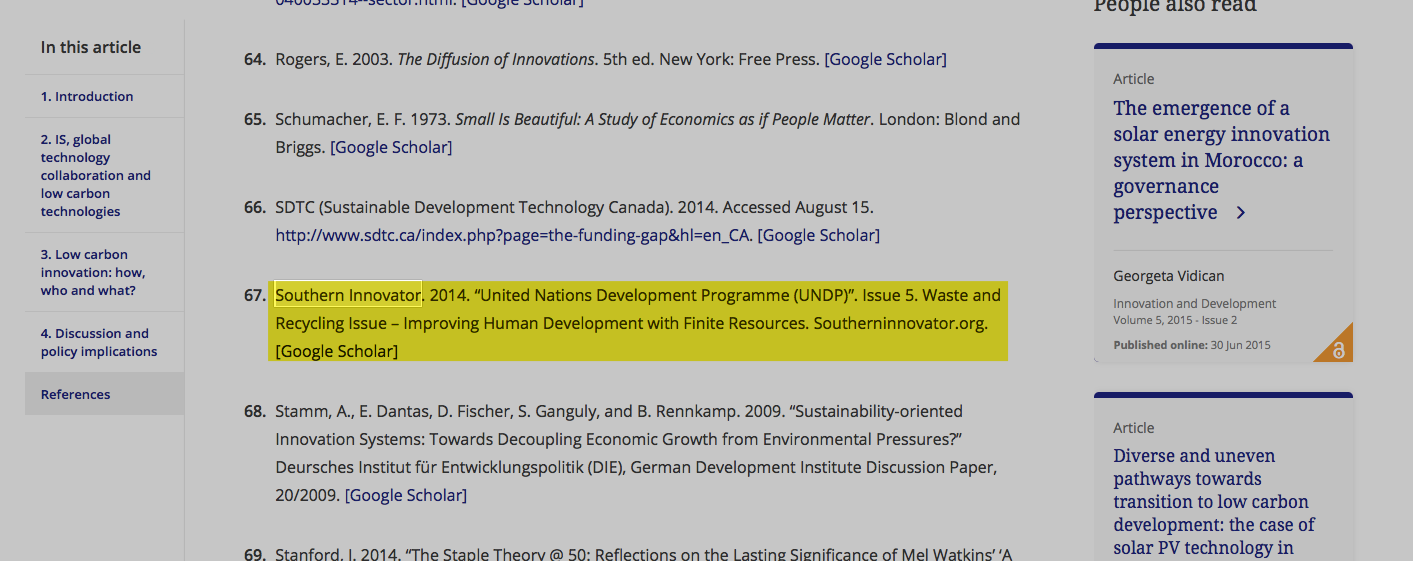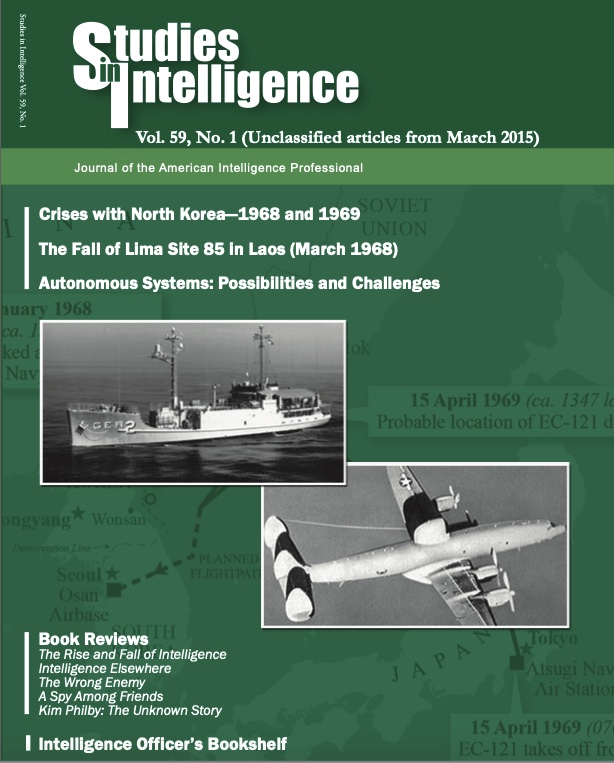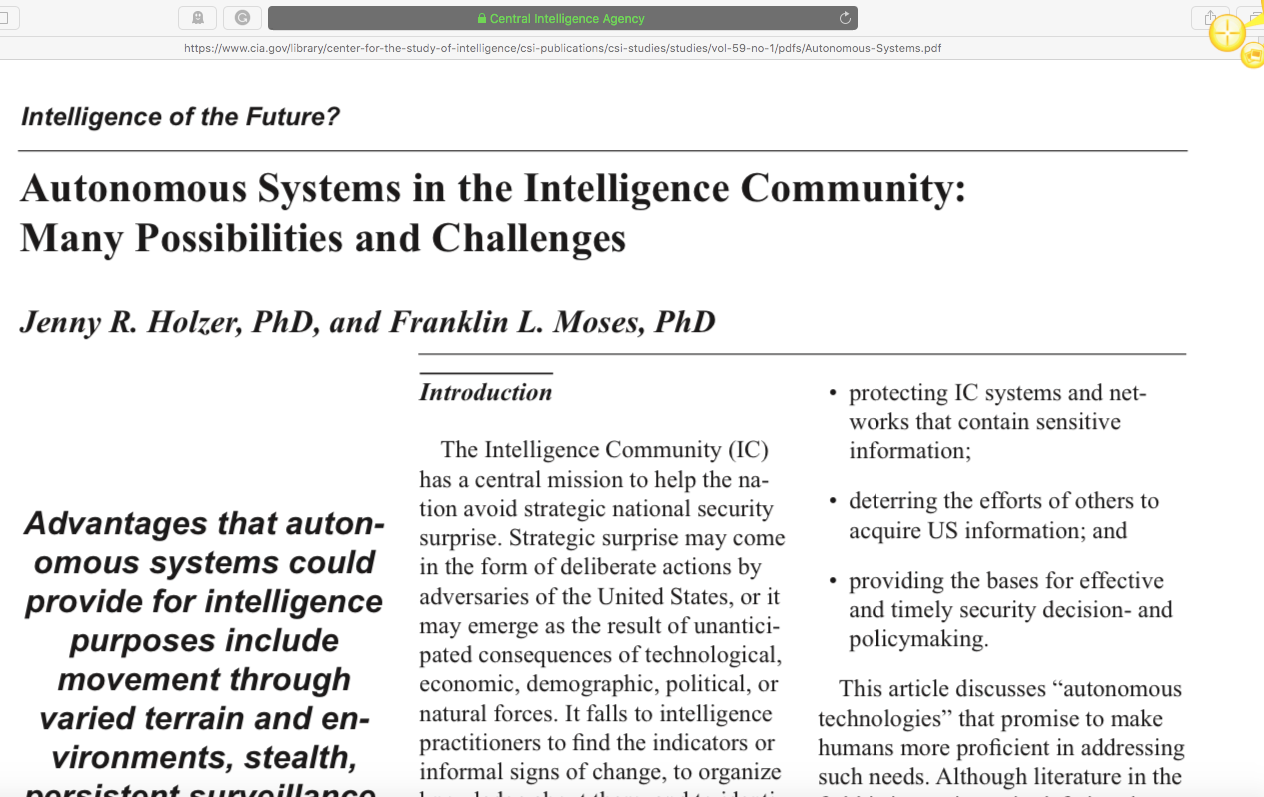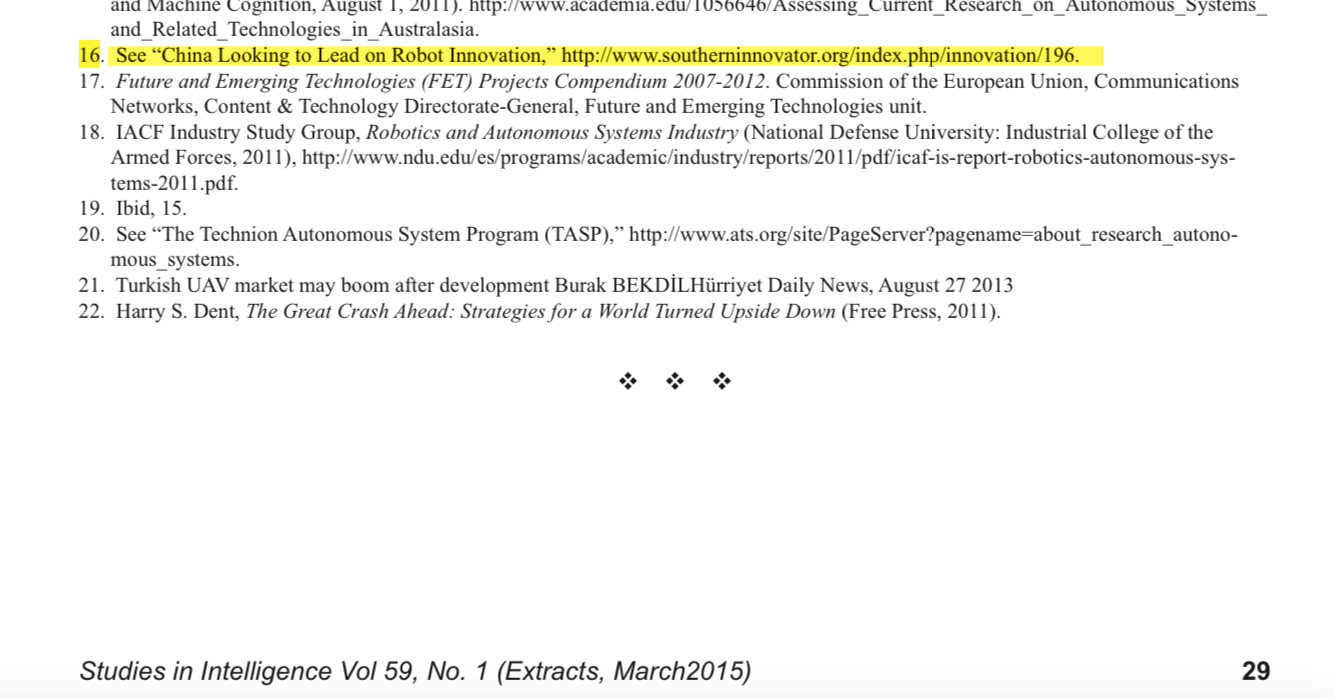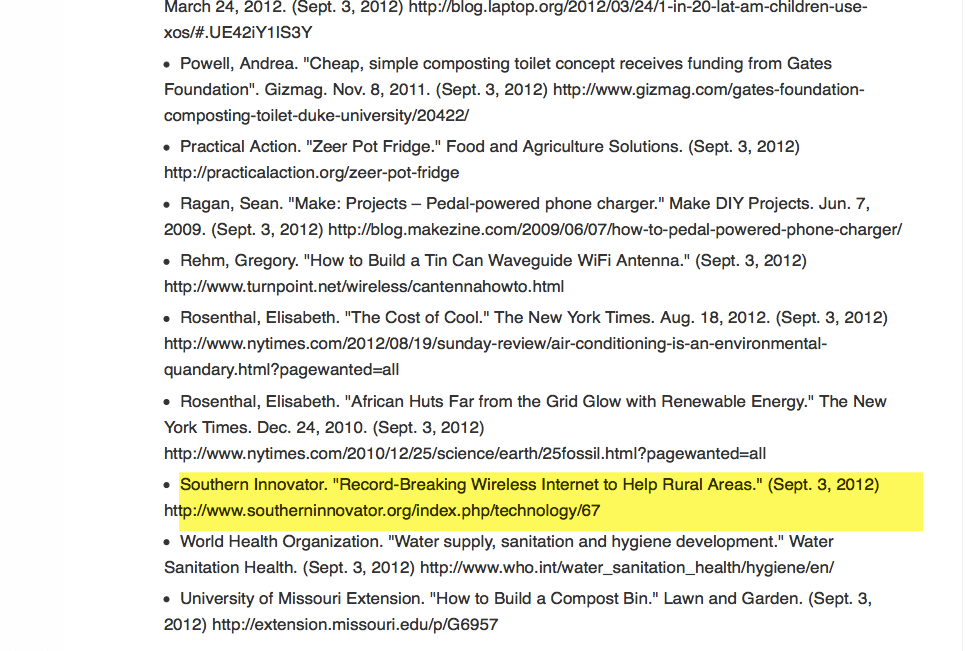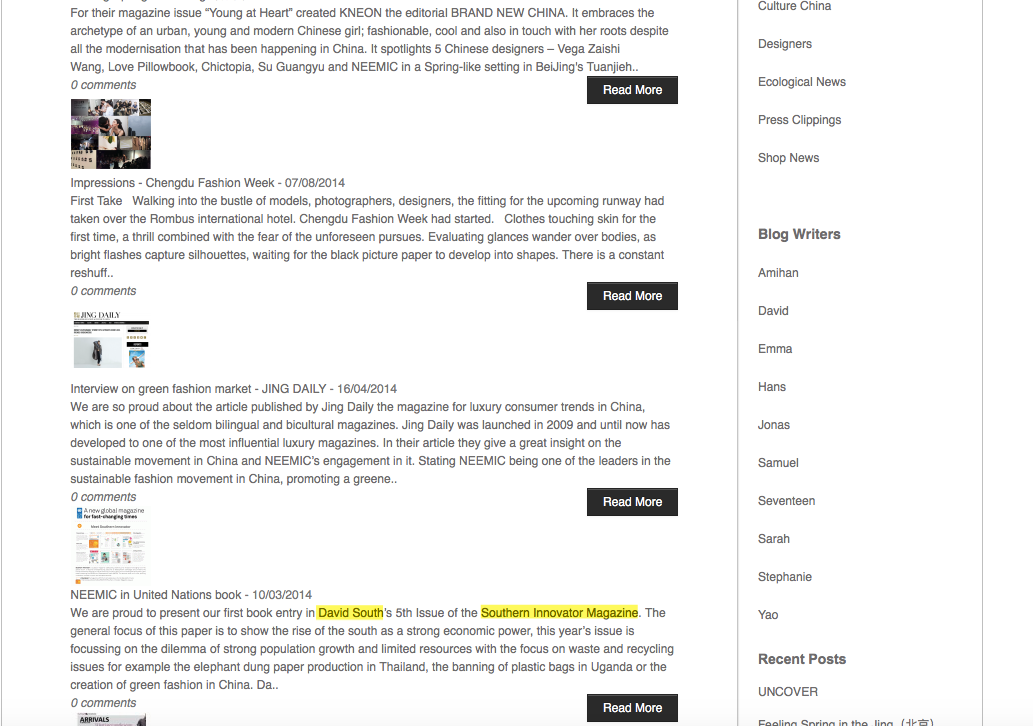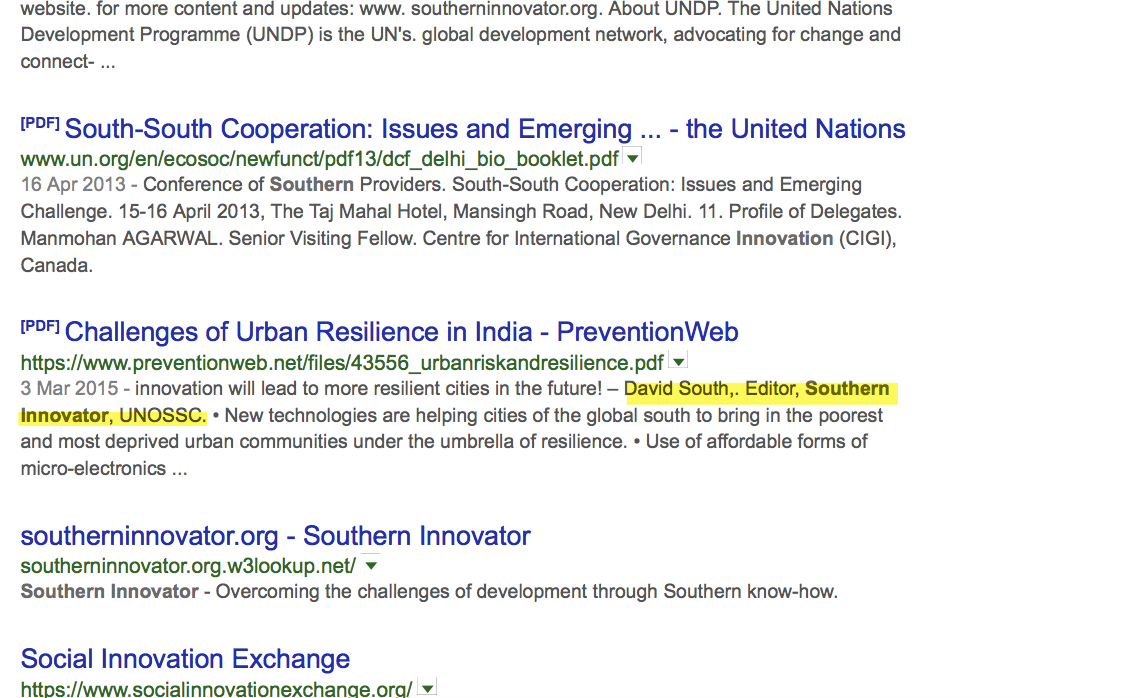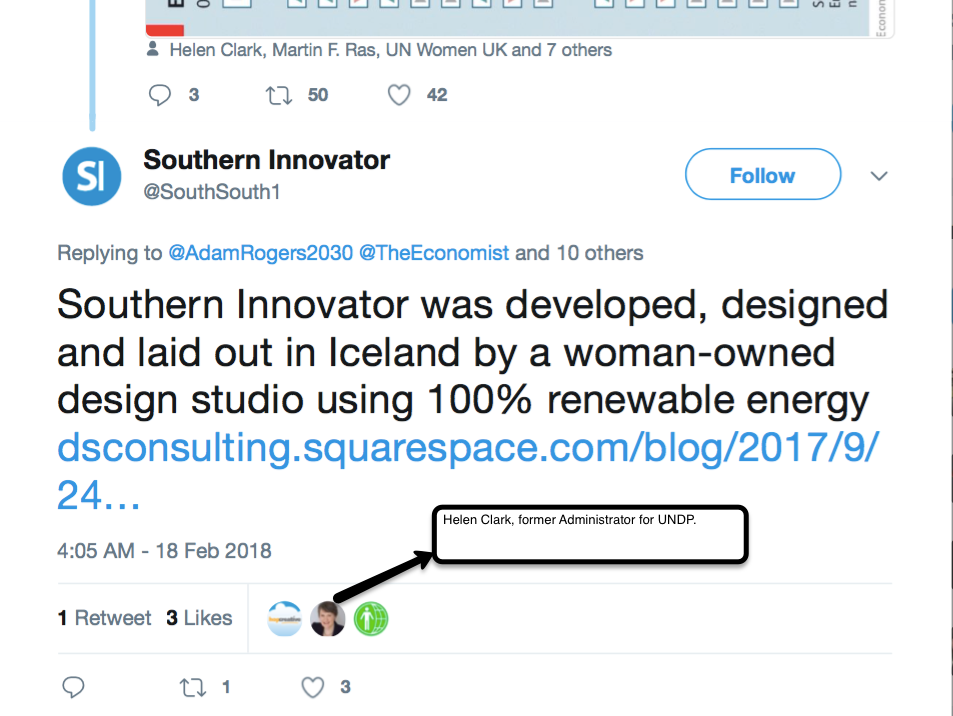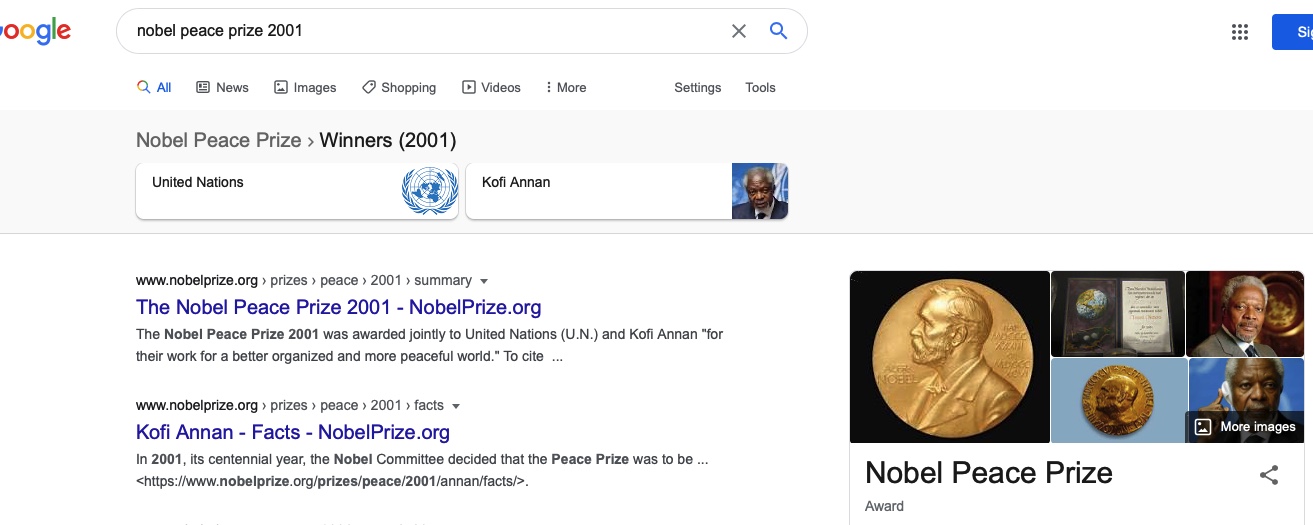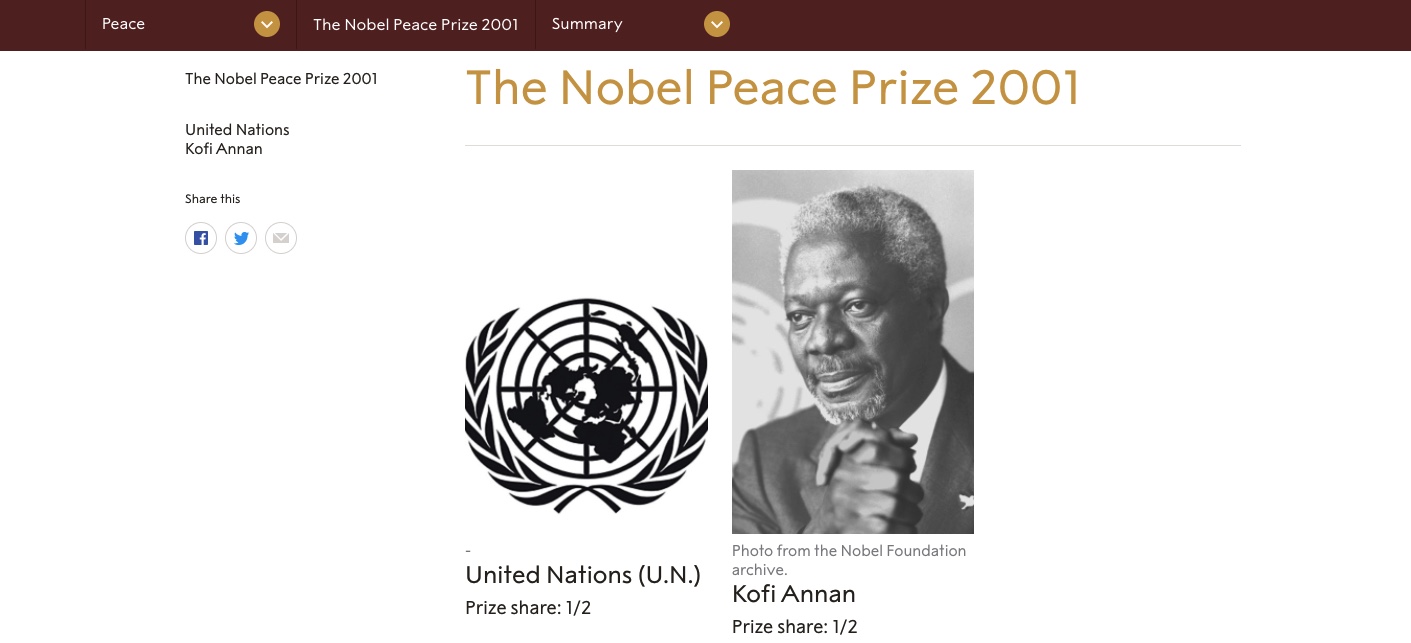
27 Years Contributing as a Health and Human Development Communicator | 1991 - 2017
Preface
Whilst studying at the University of Toronto in the 1980s, the seeds were sown for much of the work that followed in the 1990s and 2000s. And what came together was the ability to undertake innovative communications initiatives using media and the latest digital tools. I had a strong interest in what constituted a modern, healthy society, and this eventually led my studies from psychology to sociology to history and eventually medical history. Along the way, I further developed my keen interest in communicating, writing for student media and broadcasting on student radio. I also organised various student organisations, from Erindale College's first Peace Club, to its Amnesty International chapter, and eventually ran on a reforming ticket for the Students Adminstrative Council (SAC) at U of T. I undertook primary research for a history professor (Sidney Aster) working on a book, looking into the British Government's efforts to organise food supply shipments during World War II (the biography of Lord Salter, Power, Policy and Personality: the Life and Times of Lord Salter, 1881-1975), and catalogued the CIA (Central Intelligence Agency) collection for the University of Toronto (Robarts Library). Being U of T, I also had the privilege of making amazing contacts and meeting some of the brightest Canadian minds of the time (for example, Professor Edward Shorter, co-author of Shock Therapy: A History of Electroconvulsive Treatment in Mental Illness).
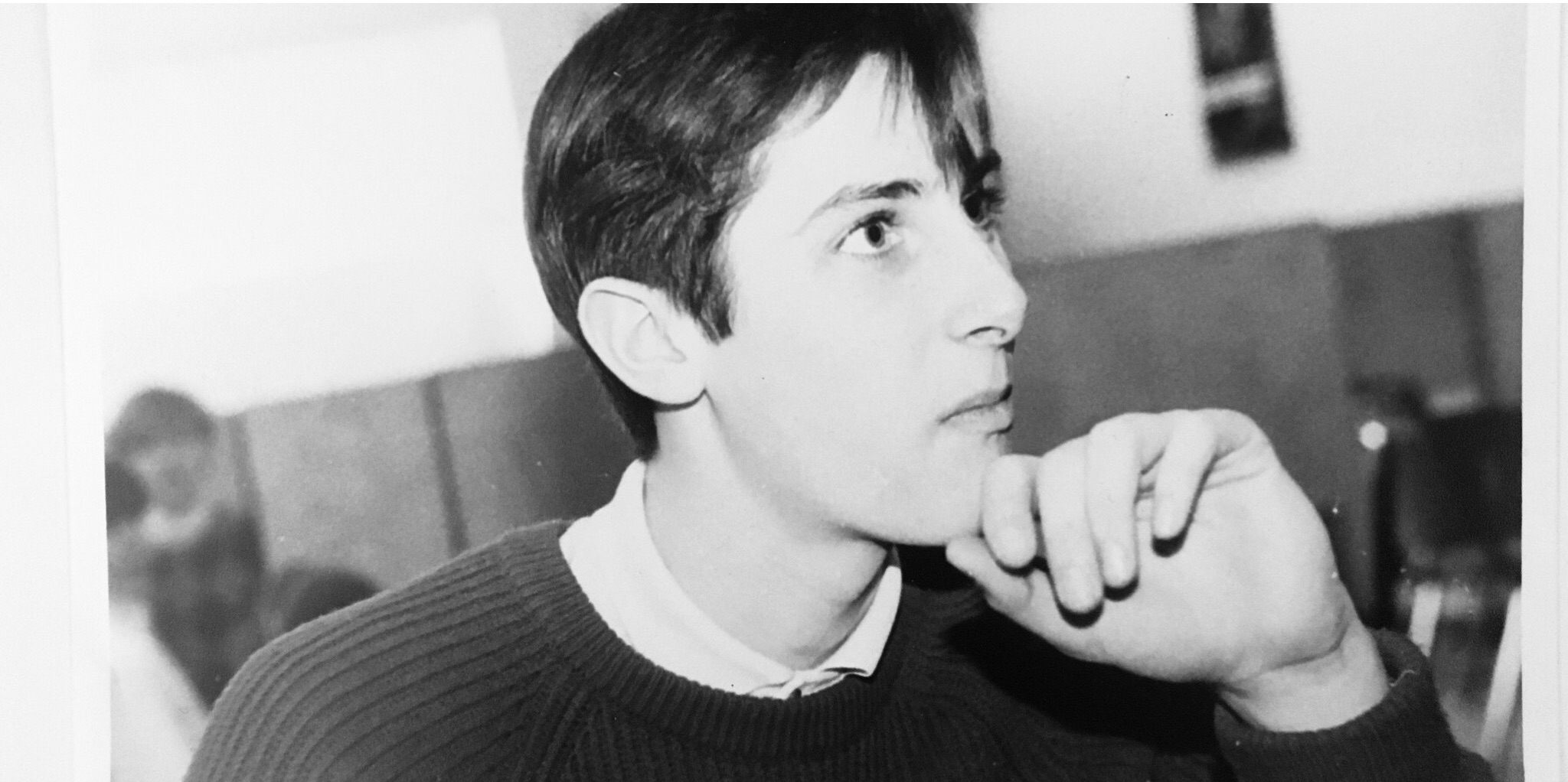
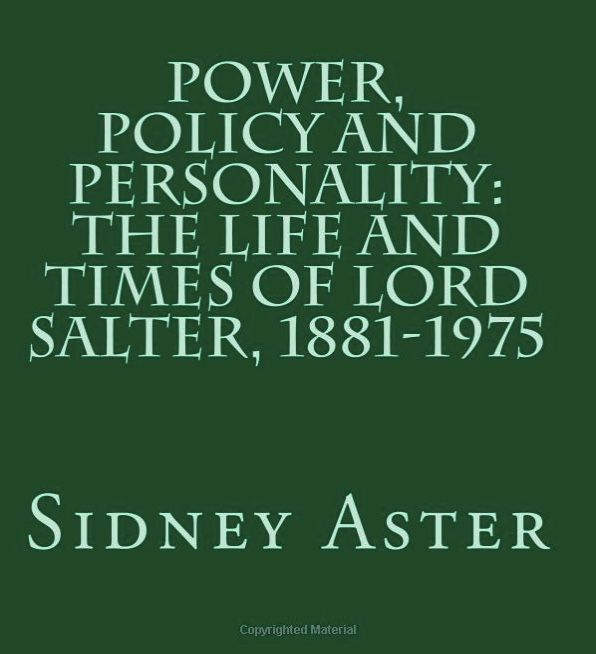 Power, Policy and Personality: The Life and Times of Lord Salter, 1881-1975 by Sidney Aster. The Papers of Lord Salter are held in the University of Cambridge Churchill Archives Centre. "Personal and political papers; with notes and correspondence collected by Professor Sidney Aster in the course of writing the official biography of Salter."
Power, Policy and Personality: The Life and Times of Lord Salter, 1881-1975 by Sidney Aster. The Papers of Lord Salter are held in the University of Cambridge Churchill Archives Centre. "Personal and political papers; with notes and correspondence collected by Professor Sidney Aster in the course of writing the official biography of Salter."
The 1990s were an exciting time because it was possible to blaze new trails with emerging digital technologies. And this led to highly influential work with the United Nations and the UK's National Health Service (NHS). This included an opportunity to head up the communications office for the UN in Mongolia just at the moment in the late 1990s when the Internet was coming online, and undertaking an influential role heading the launch of a child health portal for the prestigious Great Ormond Street Children's Hospital (GOSH)/Institute of Child Health (ICH), just as the NHS was undertaking its Modernisation Plan in the early 2000s.
By the mid-2000s, whilst consulting for the United Nations in Africa, Asia and Central Asia, I was offered a new opportunity in 2006/2007 to work with the then-Special Unit for South-South Cooperation (SSC) based in New York. It became clear there was a disconnect between what was happening within the United Nations and what was happening on the ground in the global South. The rapid take-up of mobile phones was transforming how people communicated and led their lives. Elsewhere, the wider mobile and information technologies space was generating new business models and creative ways to use communications tools to do things and make a living. All this was very stimulating and chronicled in the e-newsletter Development Challenges, South-South Solutions and Southern Innovator Magazine for the United Nations Office for South-South Cooperation (UNOSSC).
Timeline
1985/1989: Graduate from the University of Toronto with a BA Honours in History (including medical history) and Political Science. One of my final year papers addressed medical quackery involving the drug laetrile as a cancer cure and how the medical establishment and regulatory authorities, in their attempts to prevent its use, in fact played into the prevailing anti-establishment political climate and distrust of institutions and the government.
1989/1991: Begin work as a Unit Coordinator for a chemotherapy ward of the Princess Margaret Cancer Centre (previously Princess Margaret Hospital/Ontario Cancer Institute) in Toronto. First training in health informatics and witness first-hand new computer initiatives to quantify workload on the ward to better allocate resources.
1991: Investigative journalist, health and medical reporter for Today's Seniors, Hospital News, and writing for many other magazines and newspapers, including The Toronto Star and Canadian Living Magazine, drawing on my first-hand experience working in a hospital/research institute and my contacts. Covered impact of early 1990s Canadian austerity crisis on health system/healthcare as well as innovative responses to better use resources. This included covering the roll-out of the World Health Organization's Healthy Cities initiative (Taking Medicine to the People: Four Innovators in Community Healthfor Canadian Living Magazine), and medical education reforms (for The Toronto Star in Take Two Big Doses of Humanity and Call Me in the Morning). Interviewed the project head for a new innovative initiative to provide online resources for patients from the Metro Toronto Reference Library, which was later incorporated in Toronto's University Health Network.
Other stories covered included:
Changing Health Care Careers A Sign of the Times, Critics blast government long-term care reforms, Cut services to elderly, says doctors’ survey… but leave our salaries alone!, Feds call for AIDS, blood system inquiry: Some seniors infected, Government urged to limit free drugs for seniors, Health care on the cutting block: Ministry hopes for efficiency with search and destroy tactics, Health Care in Danger, New legislation will allow control of medical treatment, Private firms thrive as NDP ‘reinvents’ medicare, Psychiatric care lacking for institutionalised seniors, Seniors falling through the health care cost cracks, Specialists want cancer treatments universally available, Study Says Jetliner Air Quality Poses Health Risks.
1992/1994: Editor and Writer for the Hannah Institute for the History of Medicine, including its newsletter, better connecting Canadian medical history scholars. The archive of newsletters is held at the Wellcome Collection Library in London, UK:http://0-www.bmj.com.libsys.wellcome.ac.uk/search~S7?/tNewsletter+%28Hannah+Institute+for+the+History+of+Medicine%29/tnewsletter+hannah+institute+for+the+history+of+medicine/-3%2C-1%2C0%2CB/frameset&FF=tnewsletter+hannah+institute+for+the+history+of+medicine&
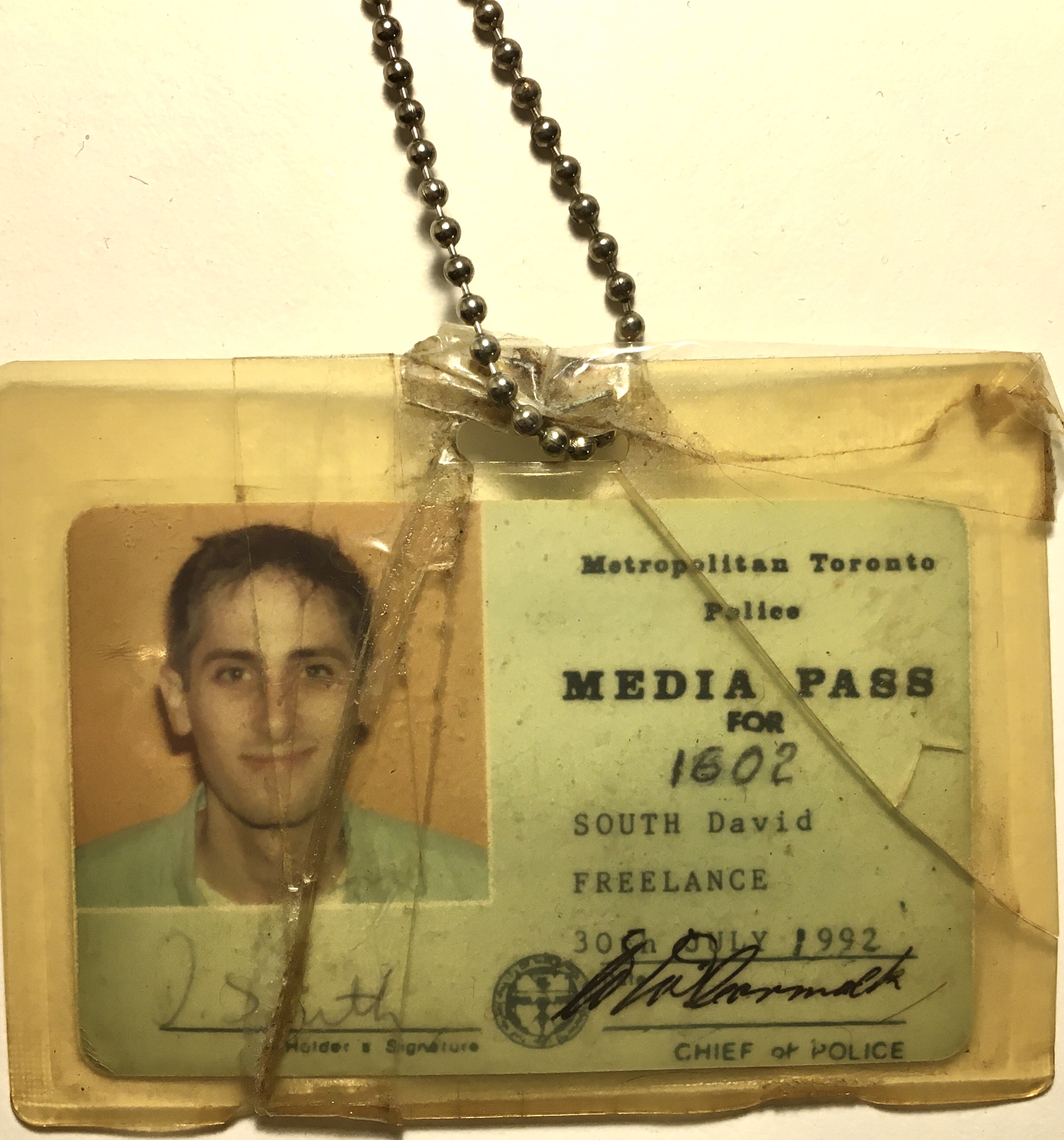
1994/1996: Editor-in-Chief for Watch Magazine, an innovative youth culture and media start-up partly funded by the Government of Canada. Watch Magazine played an important role in Toronto's recovery from the economic collapse brought about by the combination of the late 1980s crash and government austerity policies. By engaging youth (high school-aged writers, editors and creatives), Watch Magazine showed their energy and perspective could jolt the city back to life, despite the negative media portrayal of youth at the time.
“As one of those high school kids and the guy who wrote (most of) this article, I'd like to say thanks to David [South] for all his hard work on Watch magazine! I learned a lot from him and it was a great experience.” William White
In 1995 I worked as a Senior Media Reporter for the Financial Times' newsletters New Media Markets and Screen Finance. I covered the rise of new media, including the Internet and cable and satellite television channels. Also covered new film-financing schemes funded by the European Union and the rise of new media in the Nordic countries. Stories included:
Channel Regulation: Swedes Will Fight Children’s Advertising All The Way; From Special Report: NMM (New Media Markets) Spotlight On The Emergence Of Satellite Porn Channels In The UK.
1996/1997: Features Editor for Id Magazine. Id's investigative journalism unearthed many firsts, from covering the prototype experiments with e-cash and the cashless society in its hometown of Guelph, Ontario (Cashless Society Put to Test in Ontario Town, The New York Times, Sept. 30, 1997), attempts by far-right groups to organise at high schools, reporting from Port-au-Prince on the United Nations' mission in Haiti, and the social impact of Canada's expanding sex economy during the austerity and recession years of the 1990s (Special Report: Sexual Dealing - Today's Sex Toys Are Credit Cards & Cash).
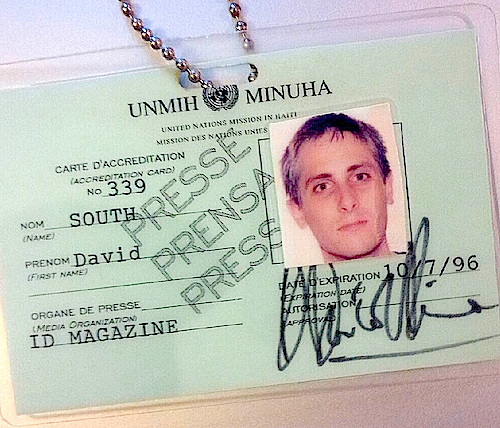
1997/1999: Communcations Coordinator and head of communications for the UN Mongolia mission in Ulaanbaatar, Mongolia (1997-1999) under the Partnership for Progress.
1997: Begin a two-year assignment as head of communications for the UN/UNDP Mongolia mission (1997-1999). Called "one of the biggest peacetime economic collapses ever", I was thrown into the deep end as part of the UN's efforts to rescue Mongolia from this severe crisis. I established the award-winning UN/UNDP Mongolia Communications Office (a high-profile and lively hub staffed by media professionals) and quickly developed and launched the award-winning UN Mongolia Development Portal (www.un-mongolia.mn) (called a "role model" for the United Nations). I developed and launched the mission's first newsletter, Blue Sky Bulletin (distributed by post, online and by email to subscribers), as well as the first Mongolian Human Development Report, the Mongolian AIDS Bulletin (after attending the Fourth International Congress on AIDS in Asia and the Pacific in 1997, and meeting and being inspired by UNAIDS head Dr. Peter Piot, the Bulletin was used to kick-start Mongolia's response to an unfolding STDs/HIV/AIDS crisis), the UN's and Mongolia's first online magazine, Ger, while also overseeing the country's largest bilingual online and offline publishing operation. InStarting from Scratch: The Challenge of Transition, I document the challenge to re-start Mongolia's data and statistics collection after it was wiped off the mainframe computers that once stored it during the Communist period (a cautionary tale for our times if there ever was one!). InFreedom of Expression: Introducing Investigative Journalism to Local Media in Mongolia, I give an account of a workshop for Mongolian journalists keen to learn more about the discipline of investigative journalism and how important it is in a democracy. In Partnership for Progress: UNDP in Mongolia, I painted a picture of Mongolia's country conditions in 1997, what was at stake, and how the UN was responding. Stabilized, by 2012 Mongolia was being called the fastest growing economy in the world, and was contributing troops to UN peacekeeping missions.

1998: Develop and launch Mongolia's first web magazine, Ger. Lead two international media tours of the country, one in 1997 (Scandinavian media), and the other in1998 (women journalists). Many stories were generated from the two international media tours and were compiled in books published by UNDP, including In Their Own Words: Selected Writings by Journalists on Mongolia, 1997-1999 (ISBN 99929-5-043-9). Read an example story here: The Milk of Kindness Flows in a Peculiar Land A Steppe From Nowhere by Leslie Chang (The Asian Wall Street Journal, 15 August 1998).
1999: Publish many books on Mongolia's development, including In Their Own Words: Selected Writings by Journalists on Mongolia, 1997-1999 (ISBN 99929-5-043-9) and the Mongolian rock and pop book (ISBN 99929-5-018-8). Whilst working for a UK-based international development consultancy, I prepared papers for the American Foundation for AIDS Research (AMFAR), the Global Fund to Fight AIDS, Tuberculosis and Malaria, the Harvard Institute for International Development (HIID), for various UN agencies including UNCTAD and UNAIDS, and coordinated the preparation of the report and launch strategy for the World Bank's Task Force on Higher Education and Society (2000).
The One World Youth Conference Series initiated by UN/UNDP Mongolia shows it is possible to engage policy makers and connect them with youth, playing a key part in the development of the Millennium Development Goals (MDGs) and the UN's winning of the Nobel Peace Prize in 2001: https://webcache.googleusercontent.com/search?q=cache:wv2Sujc7lBoJ:https://search.archives.un.org/uploads/r/united-nations-archives/1/3/3/1333b60aed62bd81200b36cf45674a5b7815b8f1974c1313cf797017db506170/S-1096-0264-21-00011.pdf+&cd=6&hl=en&ct=clnk&gl=uk
Mongolia's Follow-up to the UN Global Conferences: http://lawsdocbox.com/Politics/78172933-I-should-like-to-thank-you-for-your-kind-letter-dated-25-september-1999.html
“A UN System site. A very nice, complete, professional site. Lots of information, easily accessible and well laid out. The information is comprehensive and up-to-date. This is a model of what a UNDP CO web site should be.” From A Survey of Country Office Web Sites April 2000 by UN HQ New York.
1999/2000: Consulting for a UK-based international development consultancy and for the United Nations in Kiev, Ukraine.
2000: My work in Mongolia is covered and cited in various books published after 1999, including Wild East: Travels in the New Mongolia by Jill Lawless (ISBN 97814-5-964-5783), Modern Mongolia: From Khans to Commissars to Capitalists by Morris Rossabi (ISBN 9780-5-209-38625), and Dateline Mongolia: An American Journalist in Nomad's Land by Michael Kohn (ISBN 9781-5-7143-1554). Ukraine. Work on the strategic re-launch of the UN Ukraine web portal and advise on the communications strategy for the UN Resident Representative/UNDP Resident Coordinator. This is also the year in which the Millennium Development Goals (MDGs) were launched and the new development portal reflected this in its structure and content.

2001: UN wins Nobel Peace Prize jointly with its Secretary-General Kofi Annan, citing the Prize was "for their work for a better organized and more peaceful world."

2001/2003: Project Manager in charge of Web Strategy for the GOSH Child Health Portal at Great Ormond Street Hospital for Children NHS Trust/Institute of Child Health.
2001: Begin work on the development of the award-winning GOSH Child Health Portal for the National Health Service (NHS). As part of the NHS' Modernisation Plan, it was called a "role model" for the NHS and one of the “three most admired websites in the UK public and voluntary sectors,” and was developed and launched under heavy public and media scrutiny. Each stage of the Portal's development would coincide with a high-profile media launch. For example, the Hospital's 150th birthday celebrations included Her Majesty Queen Elizabeth II and pop star Madonna.
2002/2003: Win the Childnet Award in 2003 for the Children First website (supporters were Prince Harry and Cherie Booth QC). Children First's content was developed in partnership with the BBC (British Broadcasting Corporation). Awarded additional funding from the PPP Foundation (now AXA Research) (see Research Review 2001: A year of excellence and innovation and Research Review 2002: Building on success). The GOSH Child Health Portal grew its "hits" from 1,472,302 in February 2002, to 7,715,107 in June 2003.
"The GOSH/ICH web site to date has been a notable success. Not only has it met a majority of its objectives ... and achieved recognition as 'exemplary' among NHS resources, but it has also generated a number of spin-off projects, including Children First (as a successor to GOSHKids) and The Virtual Children's Hospital. ...
"In a context in which less than 25% of all projects realise even 50% of their benefits, the satisfaction of 75% of the original objectives .. must rank as a significant achievement." Consultant's evaluation of the GOSH Child Health Portal in 2003.
2003/2004: Live and work in Jerusalem, Israel. Travel extensively around the country during the hudna.
2004/2006: Consulting for the United Nations in Mongolia, South Africa and Turkmenistan.
2007/2017: Consultant and Editor and Writer for the United Nations Office for South-South Cooperation (UNOSSC) (formerly the Special Unit for South-South Cooperation). Both an e-newsletter (Development Challenges, South-South Solutions) and a magazine (Southern Innovator) are produced chronicling the impact of mobile and information technologies on the global South, and the rise of a 21st-century innovator culture as a result. Both media substantially raise the profile of the global South, Southern Solutions, and the 21st-century global innovation culture, while also being cited as an influential resource in the UN's adoption of an innovation and South-South Cooperation agenda for its programming and priorities.
The thinking behind this work can be found in two sources:
1) Innovation: Applying Knowledge in Development by The UN Millennium Project, "commissioned by United Nations Secretary-General Kofi Annan to develop a practical plan of action to meet the Millennium Development Goals. As an independent advisory body directed by Professor Jeffrey D. Sachs, the UN Millennium Project submitted its recommendations to the UN Secretary General in January 2005. The core of the UN Millennium Project's work has been carried out by 10 thematic Task Forces comprising more than 250 experts from around the world, including scientists, development practitioners, parliamentarians, policymakers, and representatives from civil society, UN agencies, the World Bank, the IMF, and the private sector" (Innovation: Applying Knowledge in Development, UN Millennium Development Library, Taylor & Francis, 17 June 2013).
2) Two editors for the e-newsletter and magazine, Cosmas Gitta and Audette Bruce, authored a paper jointly with Professor Calestous Juma (a well-known scholar and leading figure in the study of innovation at the Belfer Center) in 2005 for the Harvard Kennedy School's Belfer Center for Science and International Affairs titled, Forging New Technology Alliances: The Role of South-South Cooperation.
2007: David South Consulting begins work on the e-newsletter Development Challenges, South-South Solutions for the then-Special Unit for South-South Cooperation (SSC) at the United Nations. The e-newsletter is distributed by email to an influential global subscriber audience working in international development and the United Nations, as well as distributed online via various platforms.
2008: Reader response experiment begins with crowd-powered news website NowPublic. Initial proposal for the development of book or magazine on innovation. Awarded grant for Cuba study tour by BSHF.
2009:Adjust e-newsletter content based on reader responses. Begin posting content on Twitter platform.
2010:Begin development of the new global magazine Southern Innovatorwith the then-Special Unit for South-South Cooperation (SSC) at the United Nations and a design team in Iceland led by Solveig Rolfsdottir, one of Iceland's top graphic designers and illustrators.
The magazine was produced to the UN's design standards, as well as abiding by the UN's Global Compact. With production in Iceland, the magazine could be designed and laid out using 100 per cent renewable energy sources.
Launch David South Consulting as Senior Partner working with talented global professionals.
Develop and launch the new branding for David South Consulting and its website, davidsouthconsulting.com, all designed by Solveig Rolfsdottir.
2011: Launch the first issue of Southern Innovator Magazine at the Global South-South Development Expo (GSSD Expo) in Rome, Italy.
It is called “a terrific tour de force of what is interesting, cutting edge and relevant in the global mobile/ICT space…”. Launch www.southerninnovator.org website (now www.southerninnovator.com) and social media including Twitter account @SouthSouth1.
To avoid censorship and interference, Southern Innovator's editorial operations were based in London, UK and its design studio was based in Reykjavik, Iceland (a high-ranking country in the World Press Freedom rankings and a former top place holder in the UNDP Human Development Index). Using a women-led design studio, it developed a design vision that could communicate across borders using clear graphic design and high-quality images. For example, when it launched in 2011, infographics were rare in development publications and at the UN; now they are commonplace. It also tried to be as ‘green’ as possible. The studio was powered on 100 per cent renewable energy (in particular, geothermal energy); the hard copy of the magazine is printed on paper from sustainable forests.
2012: Launch second and third issues of Southern Innovator Magazine at the GSSD Expo in Vienna, Austria.
Called a "Beautiful, inspiring magazine from UNDP on South-South innovation.”
With 201 Development Challenges, South-South Solutions stories posted on the NowPublic platform, a total of 336,289 views by 2012 had occurred, according to the NowPublic counter (Closed in December 2013, the stories published on NowPublic were able to reach a large, global audience, receiving 201,109 views as of 27 June 2010, and reaching 420,151 views by 31 July 2013. The stories were cited in many other media resources and also in books. This includes Export Now: Five Keys to Entering New Markets by Frank Lavin and Peter Cohan (2011) and The Canadian).
2013: Launch fourth issue of Southern Innovator Magazine at the GSSD Expo in Nairobi, Kenya.
Called “fantastic, great content and a beautiful design!” and “Always inspiring.”.
2014: Launch fifth issue of Southern Innovator Magazine at the GSSD Expo in Washington, D.C. U.S.A. The Twitter account @SouthSouth1 called “ one of the best sources out there for news and info on #solutions to #SouthSouth challenges.” Final issues of e-newsletter Development Challenges, South-South Solutions published.
The two publications proved influential on a number of fronts, being early to draw attention to the following: the rising use of mobile phones and information technology in development, the world becoming an urban place, innovative food solutions including the nascent insect food sector (now a big thing), altering perspectives on what is possible in Africa, the use of data science to innovate development, and tracking the growing number of technology hubs and the fast-growing start-up culture in the global South. The publications were cited for shaping the new strategic direction adopted by the United Nations Development Programme (UNDP) (the UN’s leading development organisation) and its first youth strategy, and the development of the Sustainable Development Goals (SDGs). As the world’s first global innovator magazine, Southern Innovator’s design had to be appropriate for a diverse audience. It has drawn praise for being both “beautiful” and “inspiring”, while its use of sharp, modern graphic design and infographics inspired others in the UN to up their game when it comes to design.
2015: Develop scale-up plan for Southern Innovator Magazine. The UNOSSC was promoted from being a Special Unit to an Office. It also had its budget increased.
South-South cooperation and innovation have now become the key methodology for the UN’s delivery of its programmes and projects. In 2015, China pledged US $2 billion to “support South-South cooperation” and called for the international community to “deepen South-South and tripartite cooperation”. In development parlance, they have been “Mainstreaming South-South and Triangular Cooperation” in their plans.
The current policy vogue for innovation in developing and developed countries can trace its roots back to some of the early work done by these two publications (and which was further amplified by the annual Global South-South Development Expo (GSSD Expo), which often would feature innovators from the two publications, spreading the innovation message around the world). Both publications had set out to inspire and “champion a global 21st century innovator culture”. And they have done this, as can be seen from concrete evidence and anecdotal responses from individuals and organizations alike.
By 2015, davidsouthconsulting.com is ranked in the Top Million Sites in the world by Alexa (at 920,811).
2016: Many books have been published citing stories from the e-newsletter Development Challenges, South-South Solutions and Southern Innovator Magazine. They include: Beyond Gated Communities edited by Samar Bagaeen and Ola Uduku (Routledge: 2015), Chile in Transition: Prospects and Challenges for Latin America's Forerunner of Development by Roland Benedikter and Katja Siepmann (Springer: 2015), Export Now: Five Keys to Entering New Markets by Frank Lavin and Peter Cohan (John Wiley & Sons: 2011), Innovation Africa: Emerging Hubs of Excellenceedited by Olugbenga Adesida, Geci Karuri-Sebina and João Resende-Santos (Emerald Group Publishing: 2016), New Directions in Children's and Adolescents' Information Behavior Research edited by Dania Bilal and Jamshid Beheshti (Emerald Group Publishing: 2014), A Sociological Approach to Health Determinants by Toni Schofield (Cambridge University Press: 2015).
Many papers have been published citing stories from the e-newsletter and the magazine. They include: Afro-futurism and the aesthetics of hope in Bekolo's Les Saignantes and Kahiu's Pumzi by Mich Nyawalo, Journal of the African Literature Association, Volume 10, 2016, Issue 2,Autonomous Systems in the Intelligence Community: Many Possibilities and Challenges by Jenny R. Holzer, PhD, and Franklin L. Moses, PhD, Studies in Intelligence Vol 59, No. 1 (Extracts, March 2015), Decoding the Brand DNA: A Design Methodology Applied to Favela Fashion by Magali Olhats, Universidade Federal de Santa Catarina Florianopolis, 2012, Edible Insects and the Future of Food: A Foresight Scenario Exercise on Entomophagy and Global Food Security by Dominic Glover and Alexandra Sexton, Institute of Development Studies, King’s College London, Evidence Report No 149, September 2015,Evaluation of Kenyan Film Industry: Historical Perspective by Edwin Ngure Nyutho, School of Journalism and Mass Communication, University of Nairobi, 2015, Evaluation of the Regional Programme for Africa (2008-2013), UNDP Independent Evaluation Office, 2013, High-level Committee on South-South Cooperation Seventeenth Session: Framework of operational guidelines on United Nations support to South-South and triangular cooperation: Note by the Secretary-General, 22-25 May 2012, New York, The New Middle Class and Urban Transformation in Africa: A Case Study of Accra, Ghana by Komiete Tetteh, The University of British Colombia, 2016, Propagating Gender Struggles Through Nollywood: Towards a Transformative Approach by Nita Byack George Iruobe, Geonita Initiative for Women and Child Development, 17 July 2015,Reberberation: Musicians and the Mobilization of Tradition in the Berber Culture Movement by TMG Wiedenkenner et al, The University of Arizona, 2013, Recasting ‘truisms’ of low carbon technology cooperation through innovation systems: insights from the developing world by Alexandra Mallett, Innovation and Development, 5:2, 297-311, DOI: 10.1080/2157930X.2015.1049851, Routledge Taylor & Francis Group, 2015,"Slam the Slums": Understanding architecture through the poor by Malini Foobalan, November 26th, 2009, Song Lines: Mapping the South African Live Performance Landscape: Report of the CSA 2013 Live Mapping Project Compiled by Concerts South Africa, Samro Foundation, 2013, Strategic Framework of the United Nations Office for South-South Cooperation, 2014-2017, Executive Board of the United Nations Development Programme, the United Nations Population Fund and the United Nations Office for Project Services, 27 to 31 January 2014, New York, Using Mobile-Enabled Devices for Engagement and Monitoring of Patient with Chronic Disease: Hypertensive Case by Akinwole A.K., Yekini N.A., Oloyede A.O., Ojo O., International Journal of Scientific & Engineering Research Volume 10, Issue 4, April 2019 (ISSN 2229-5518), Wearing Your Map on Your Sleeve: Practices of Identification in the Creation and Consumption of Philippine Map T-shirts by Pamela Gloria Cajilig, paper presented at the 6th Global Conference (2014): Fashion: Exploring Critical Issues, Mansfield College, Oxford, United Kingdom, 15th to 18th September 2014, Young Girls' Affective Responses to Access and Use of Information and Communication Technology (ICT) in Information-Poor Societies by Dania Bilal et al, New Directions in Children's and Adolescents' Information Behavior Research, Library and Information Science, Volume 10, Emerald Group Publishing Limited, 2014, Youth Empowered as Catalysts for Sustainable Human Development: UNDP Youth Strategy 2014-2017, United Nations Development Programme, Bureau for Development Policy.
2017: Invited to speak at theWorkshop on Innovations in Service Delivery: The Scope for South-South and Triangular Cooperation in Dhaka, Bangladesh. Able to see first-hand how many of the ideas developed in the e-newsletter and the magazine Southern Innovator were being implemented in a country. Work featured in new book Busted: An Illustrated History of Drug Prohibition in Canada by Susan Boyd (Fernwood Publishing, 2017, ISBN 978-1-55266-976-1).
2018:
ORCID iD: https://orcid.org/0000-0001-5311-1052.
© David South Consulting 2018

Scan code with your phone and help us out.

